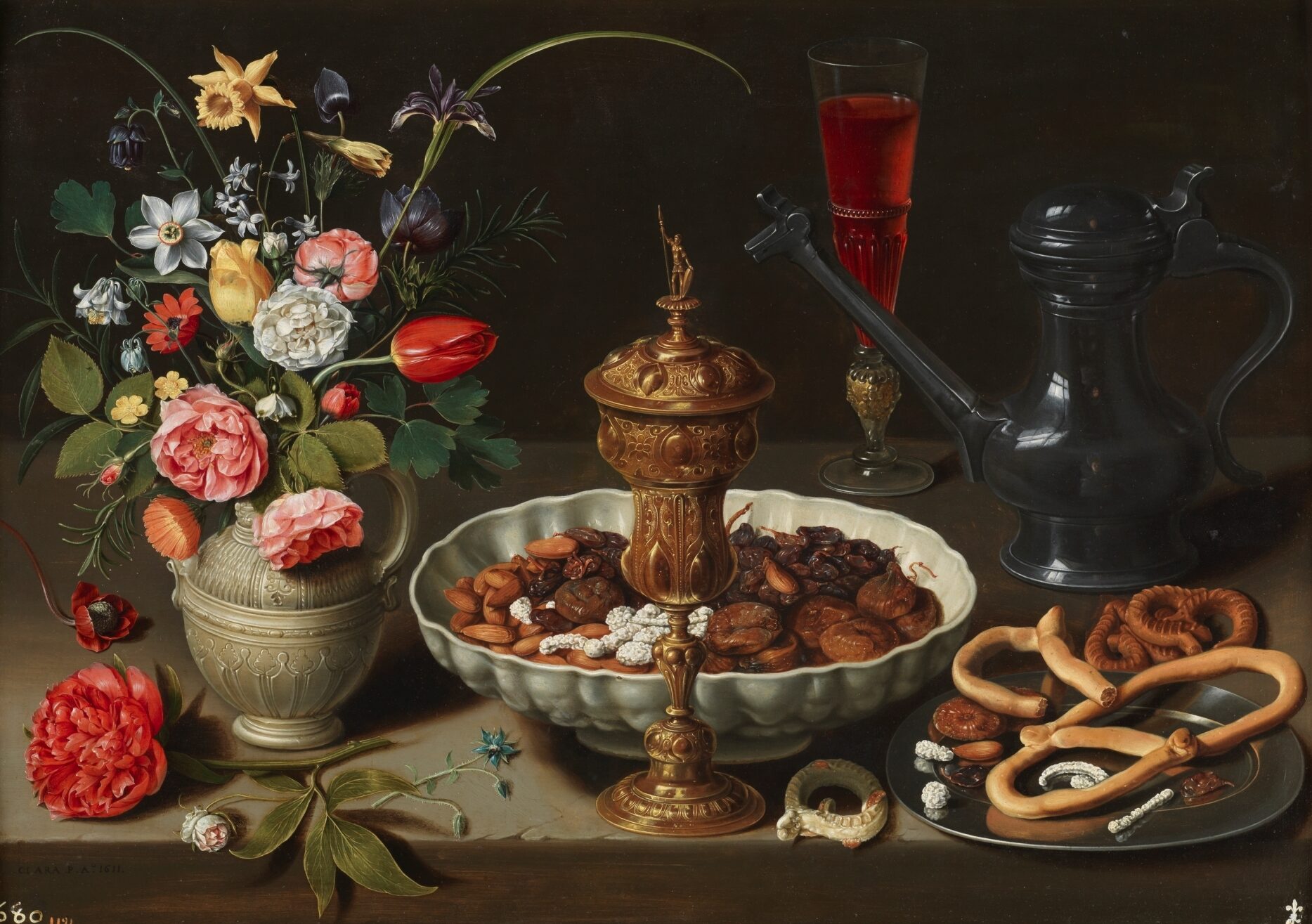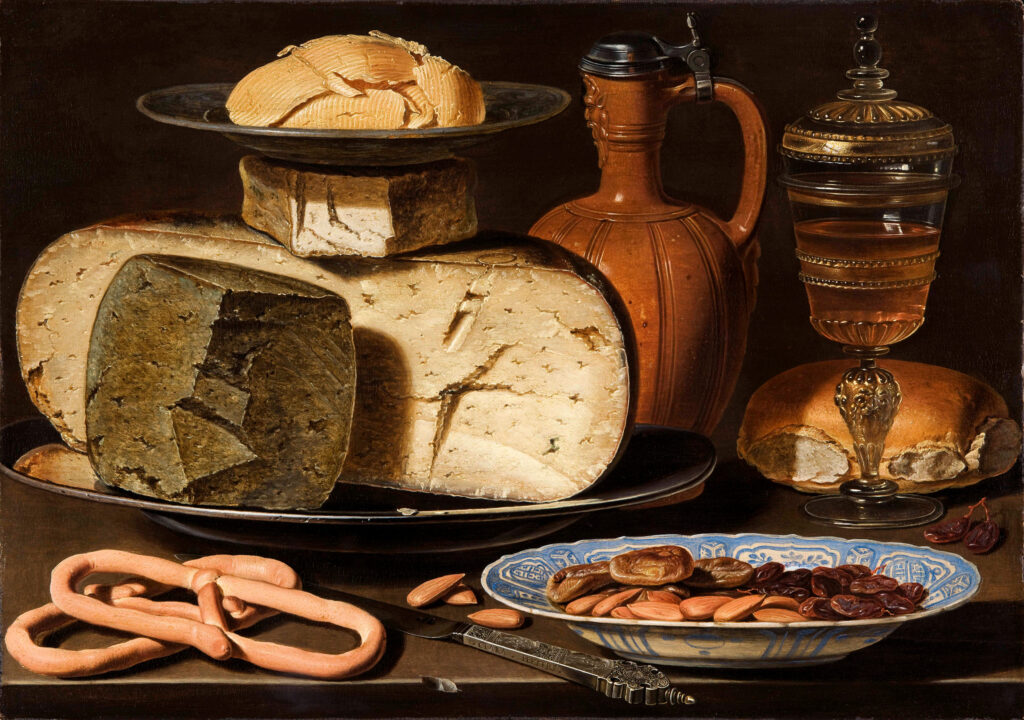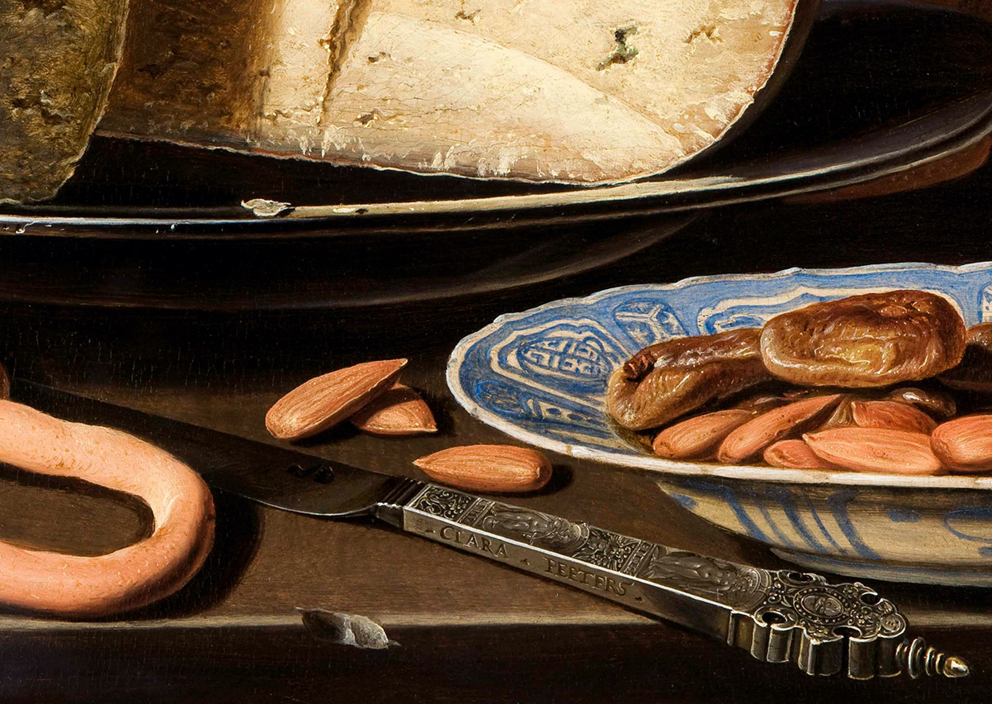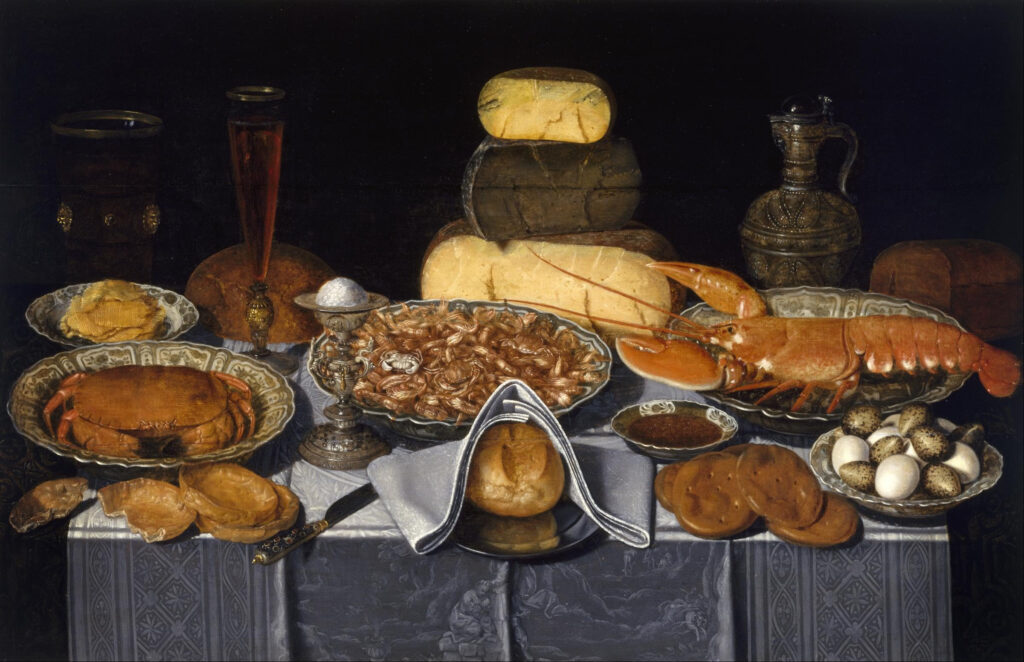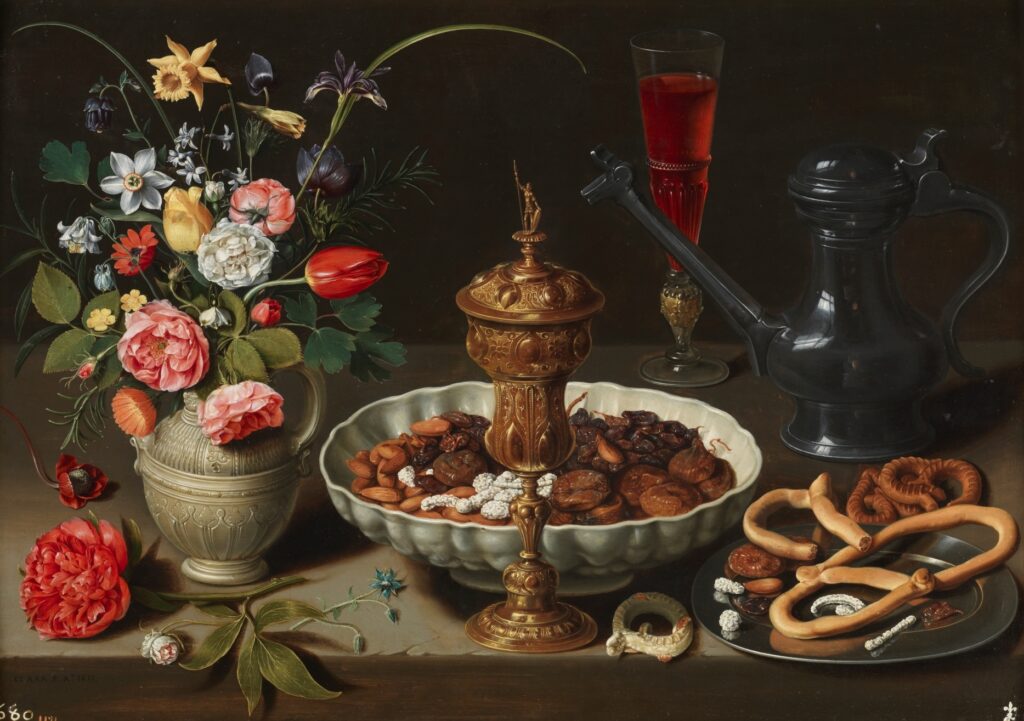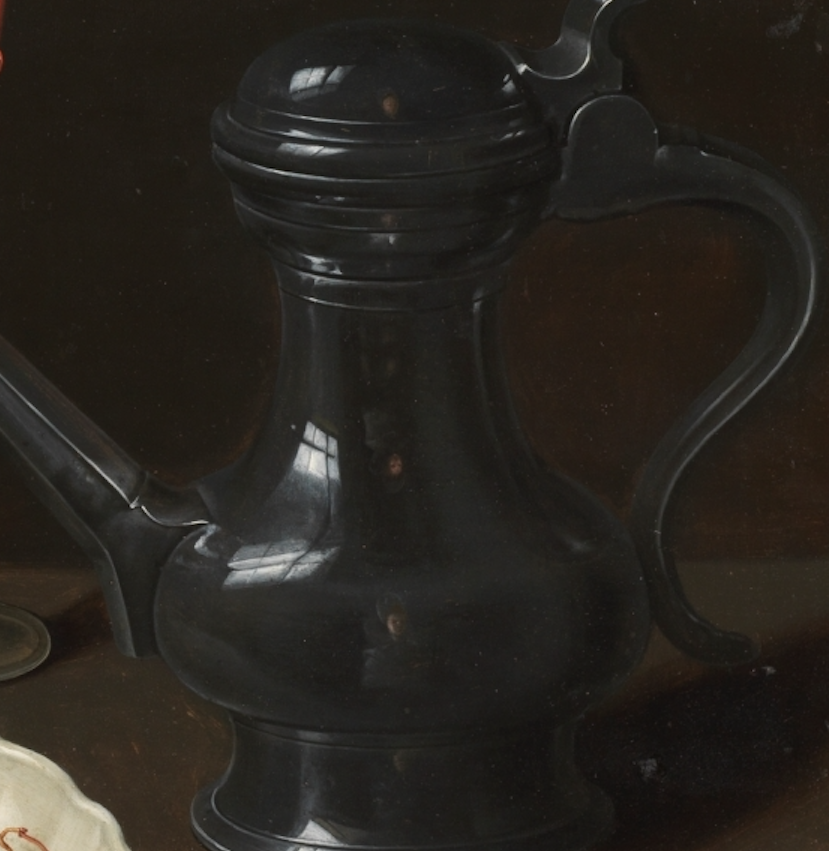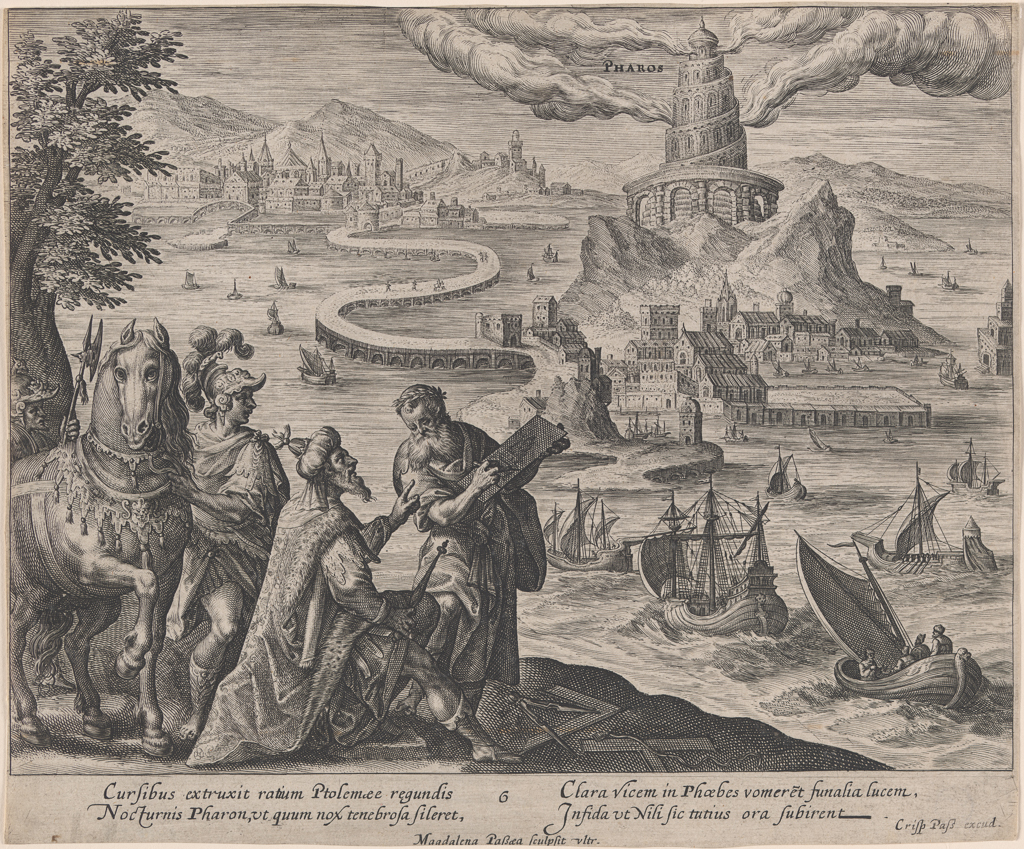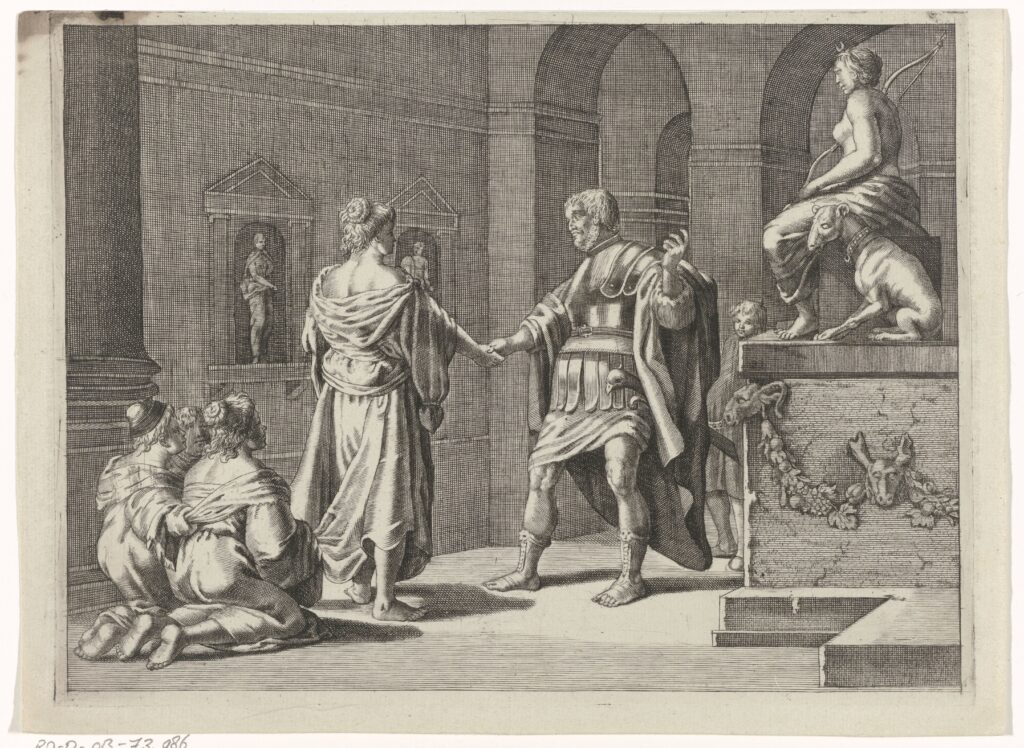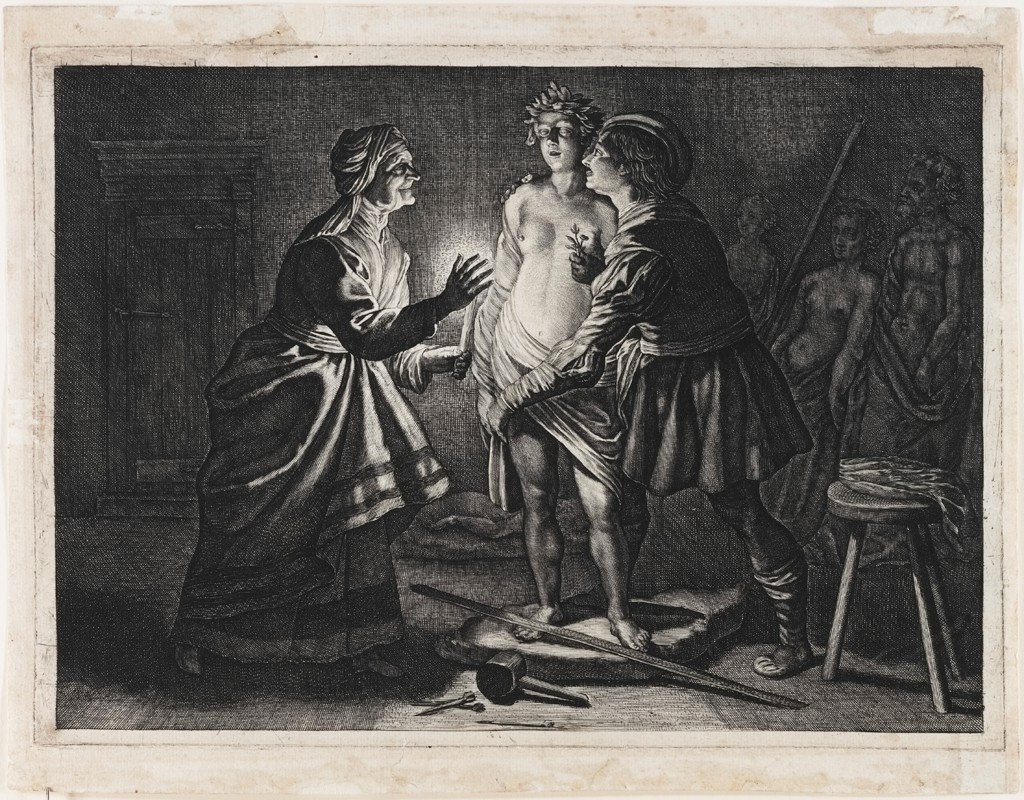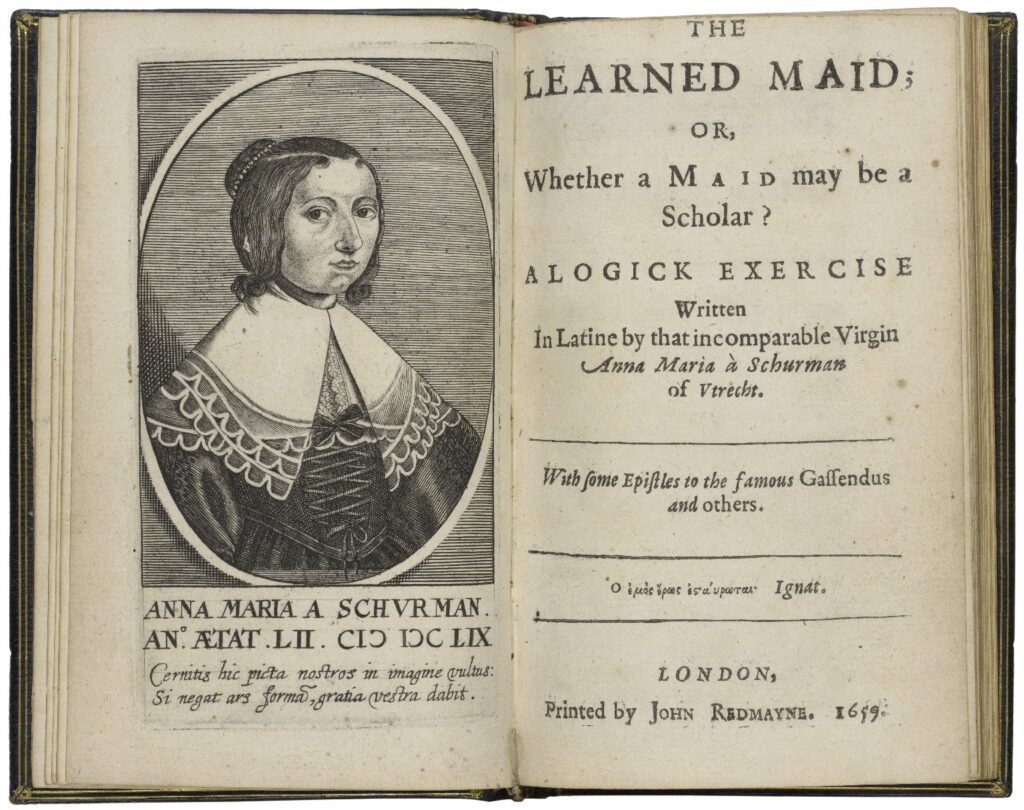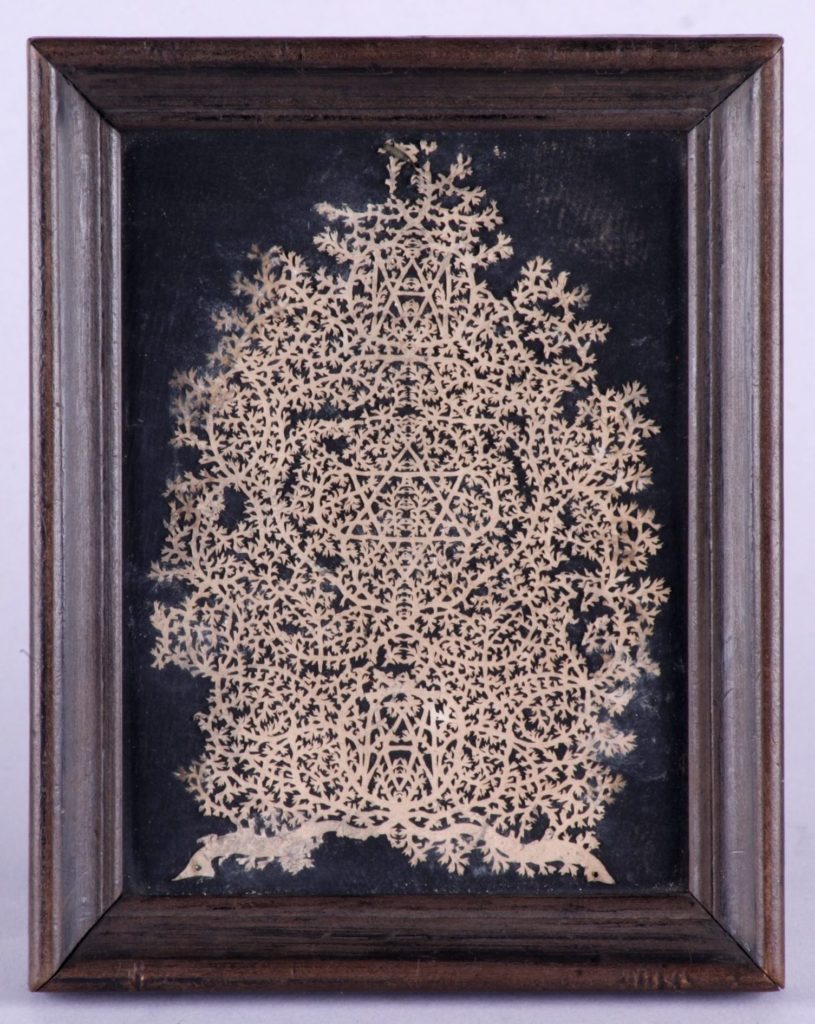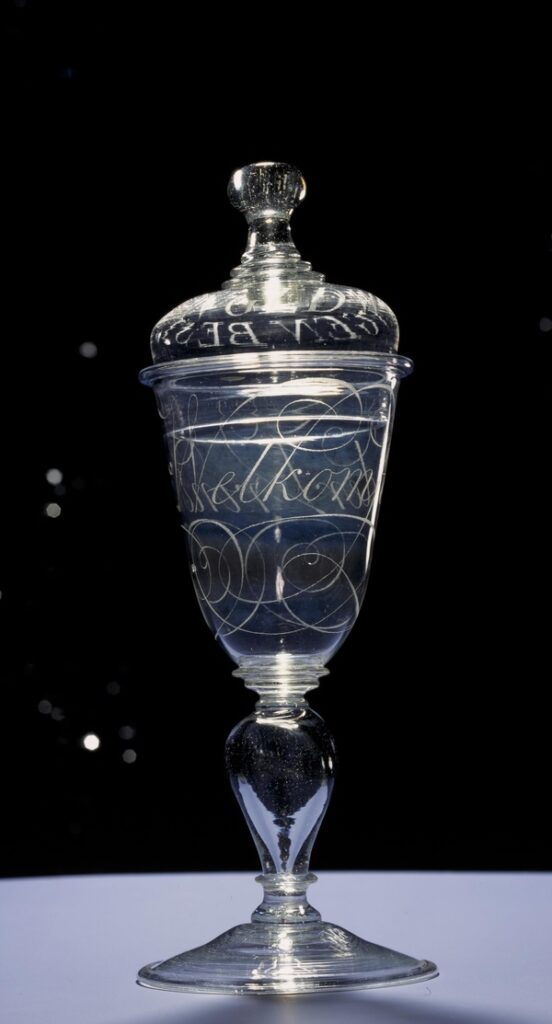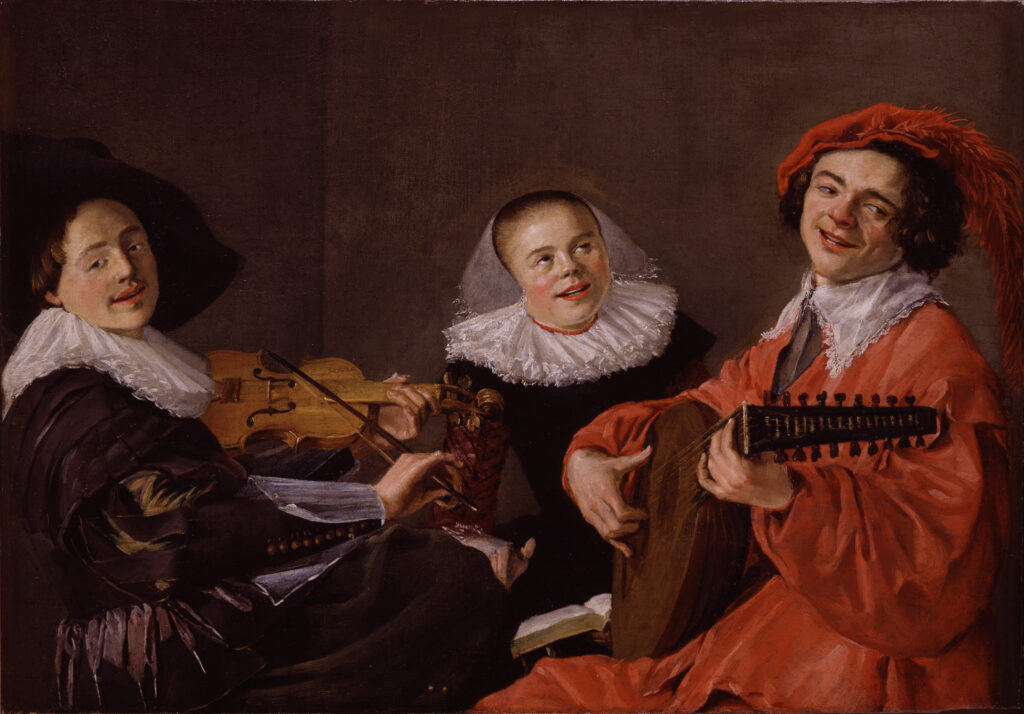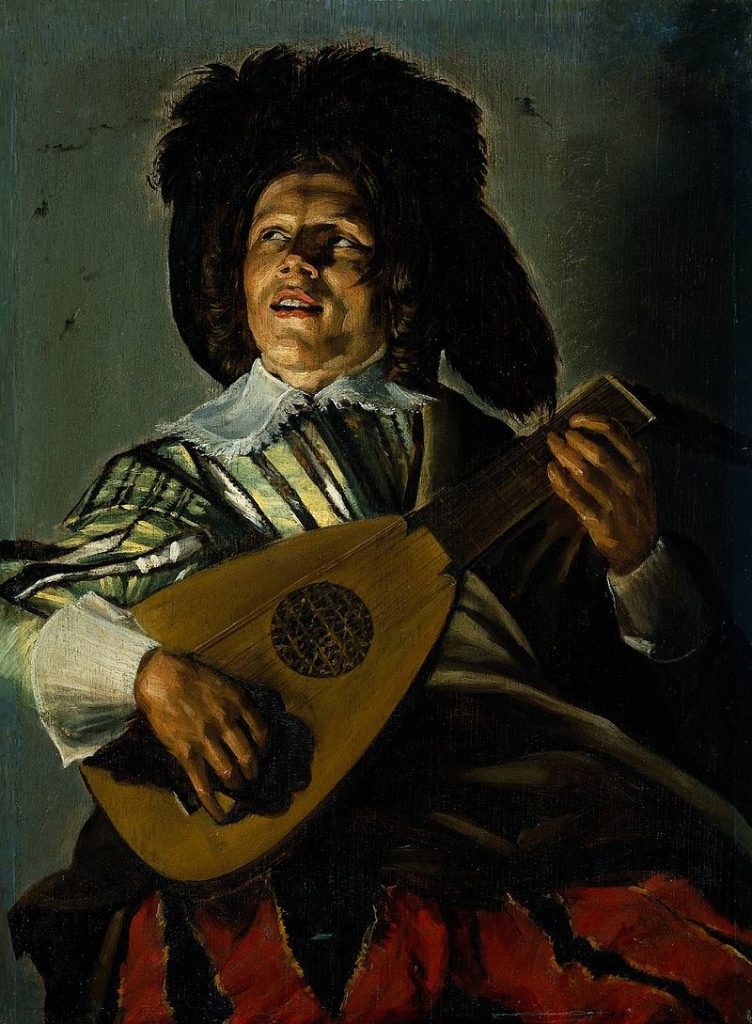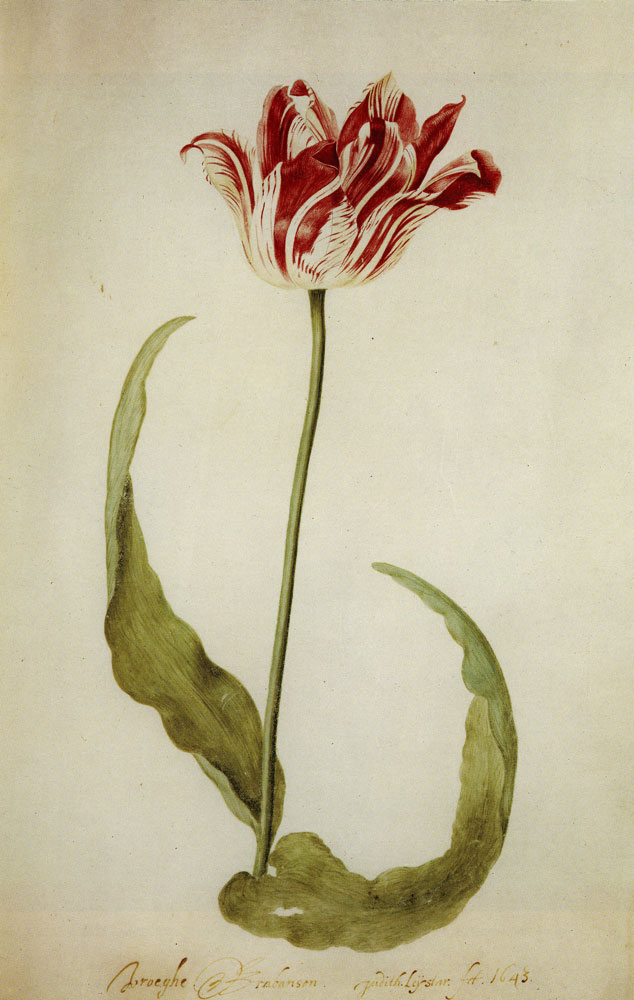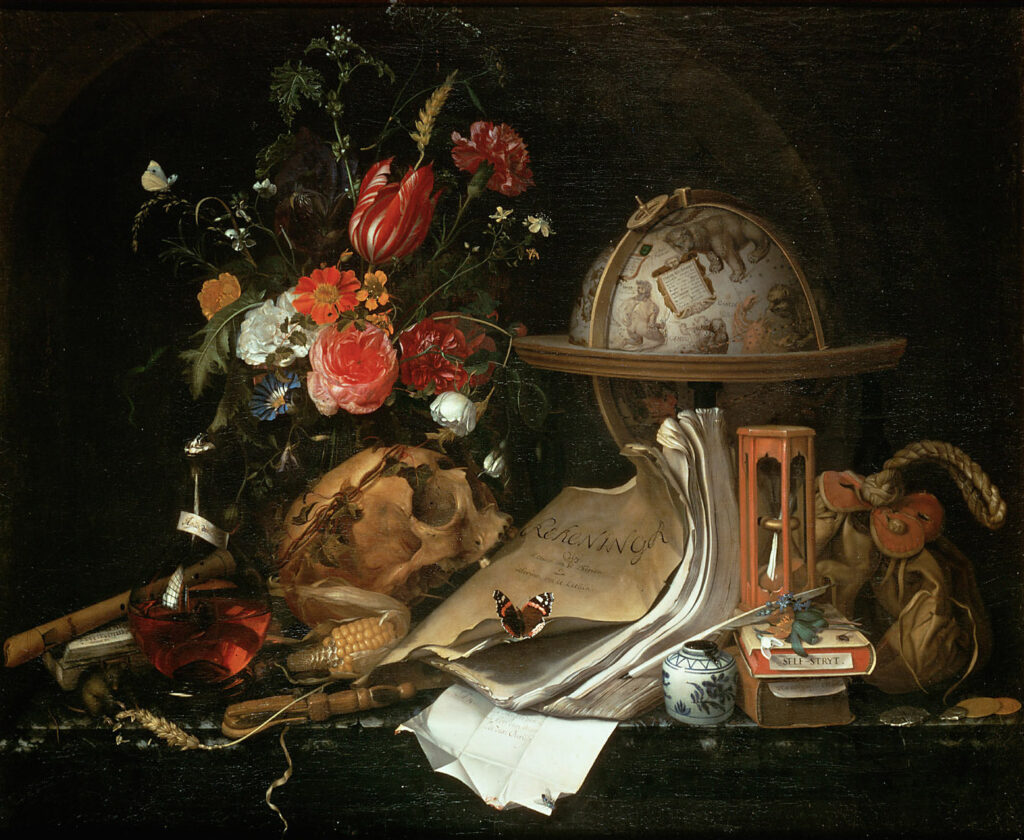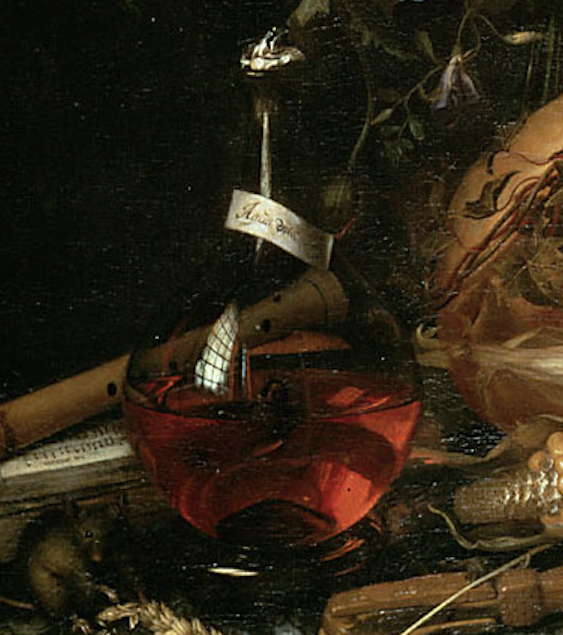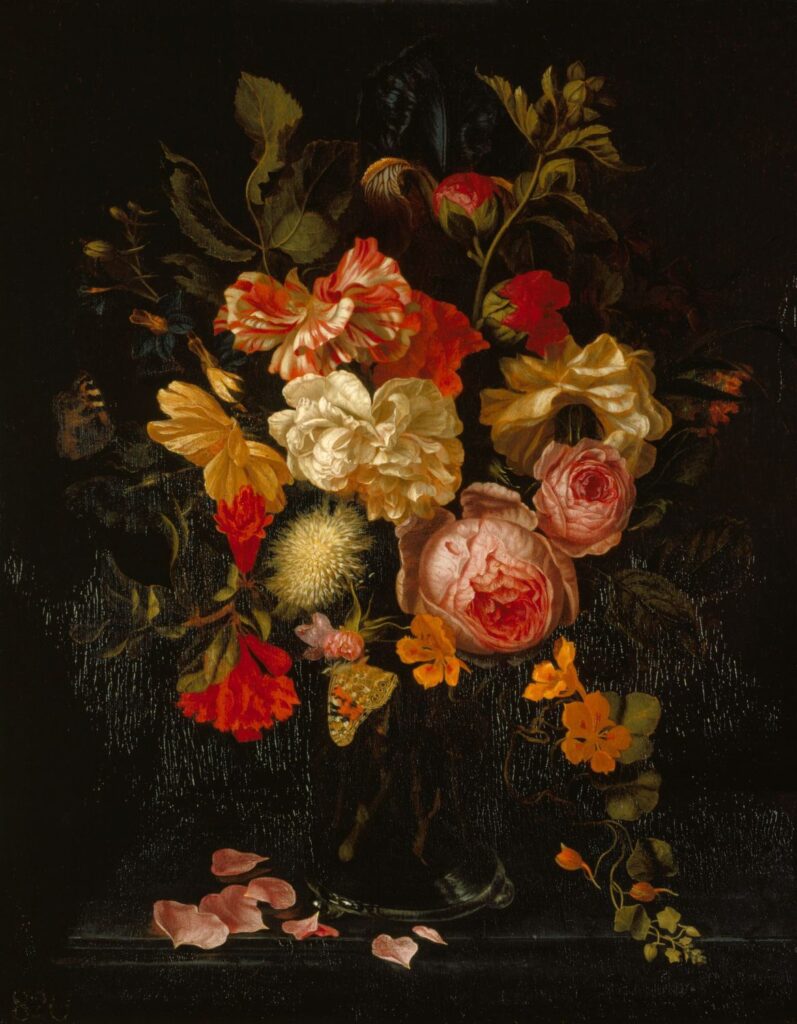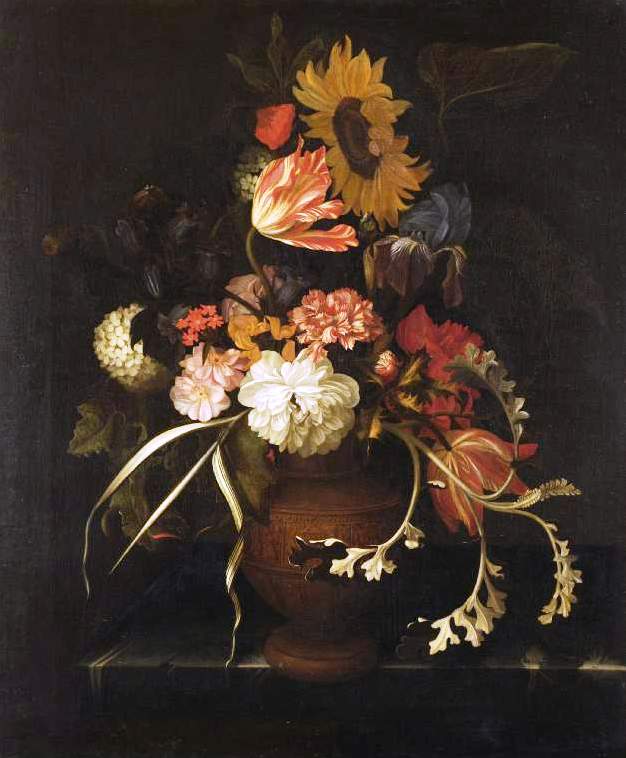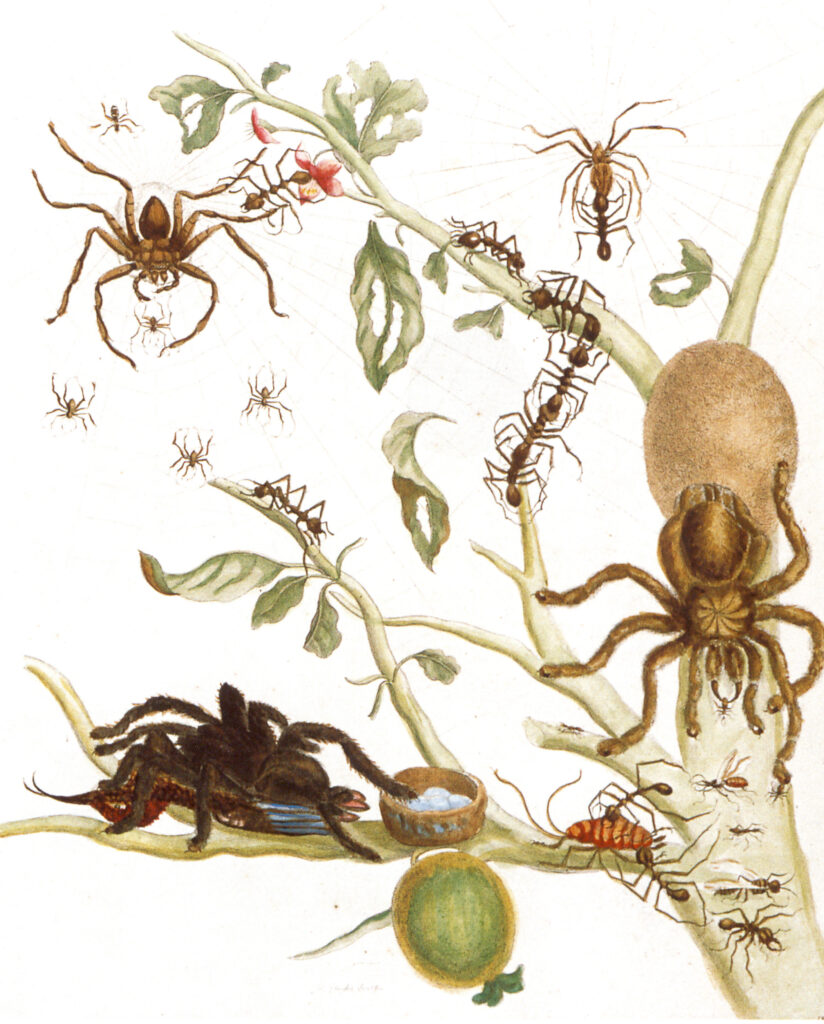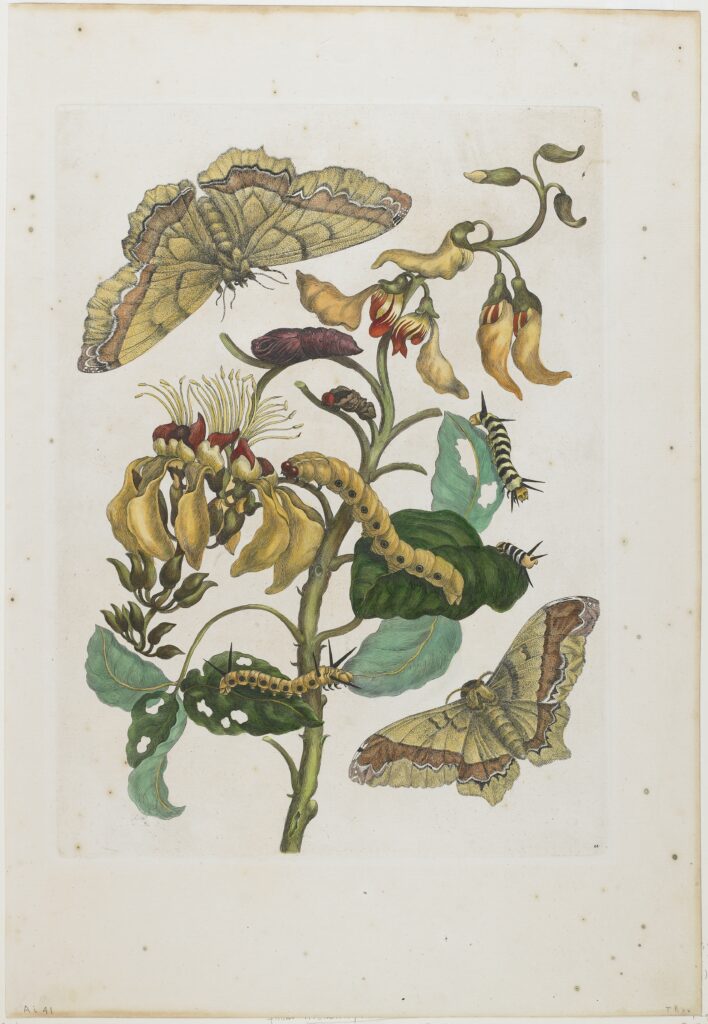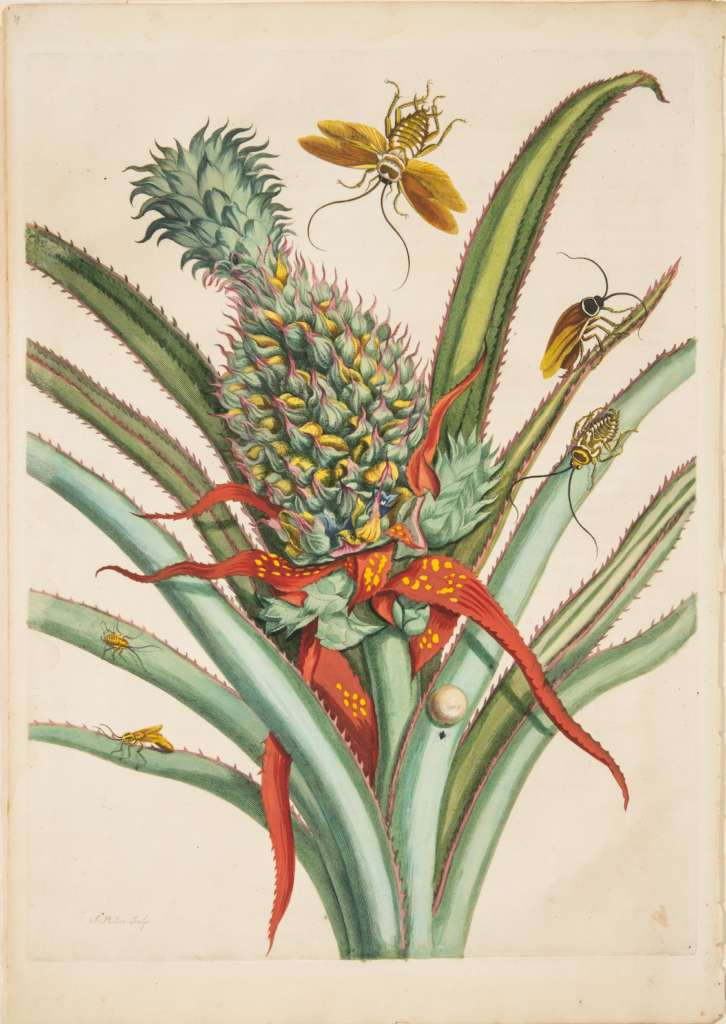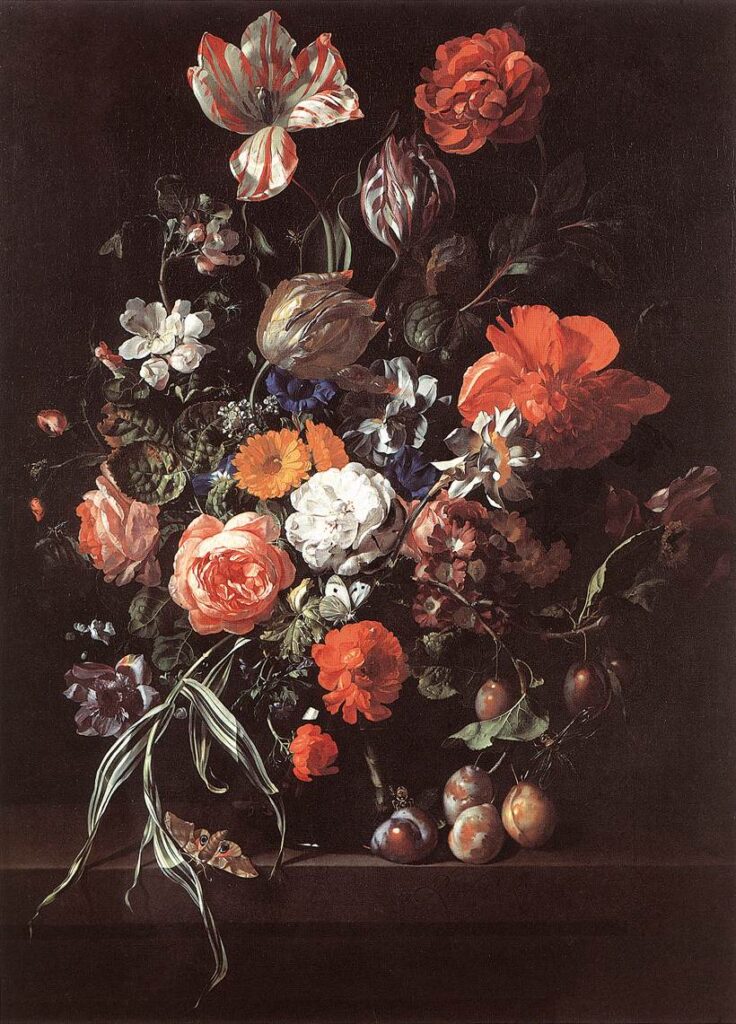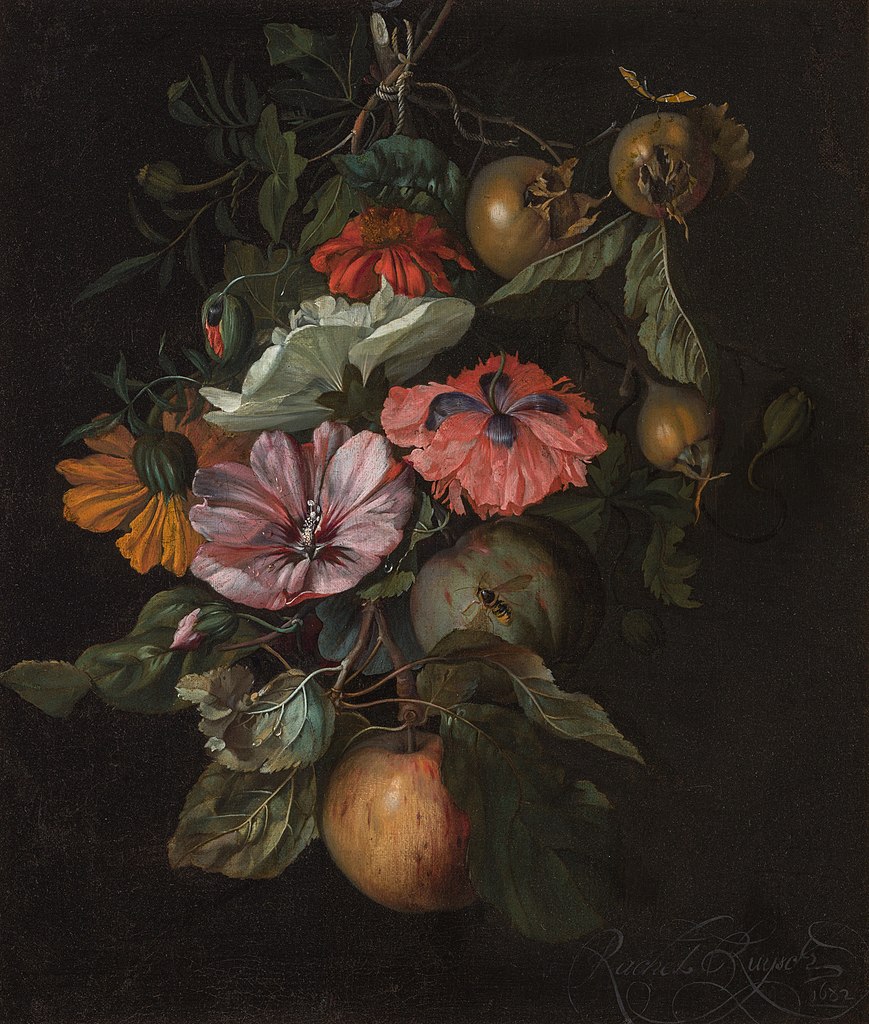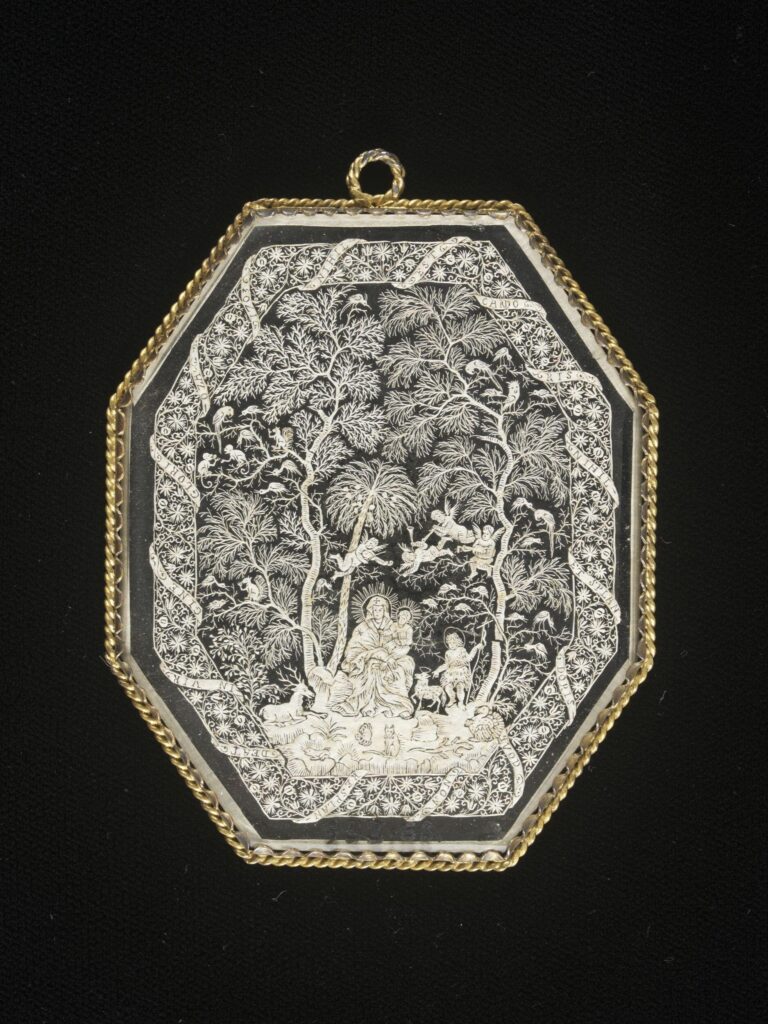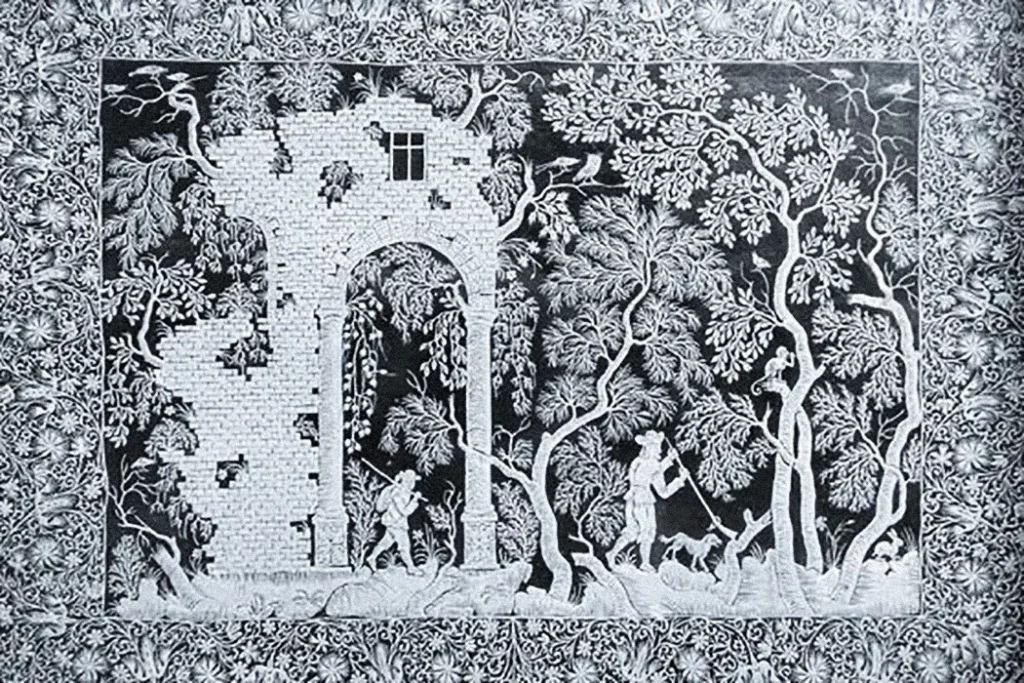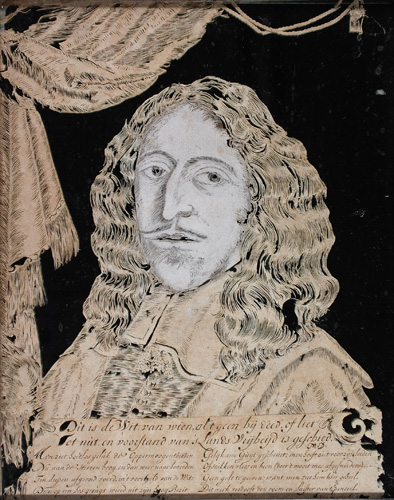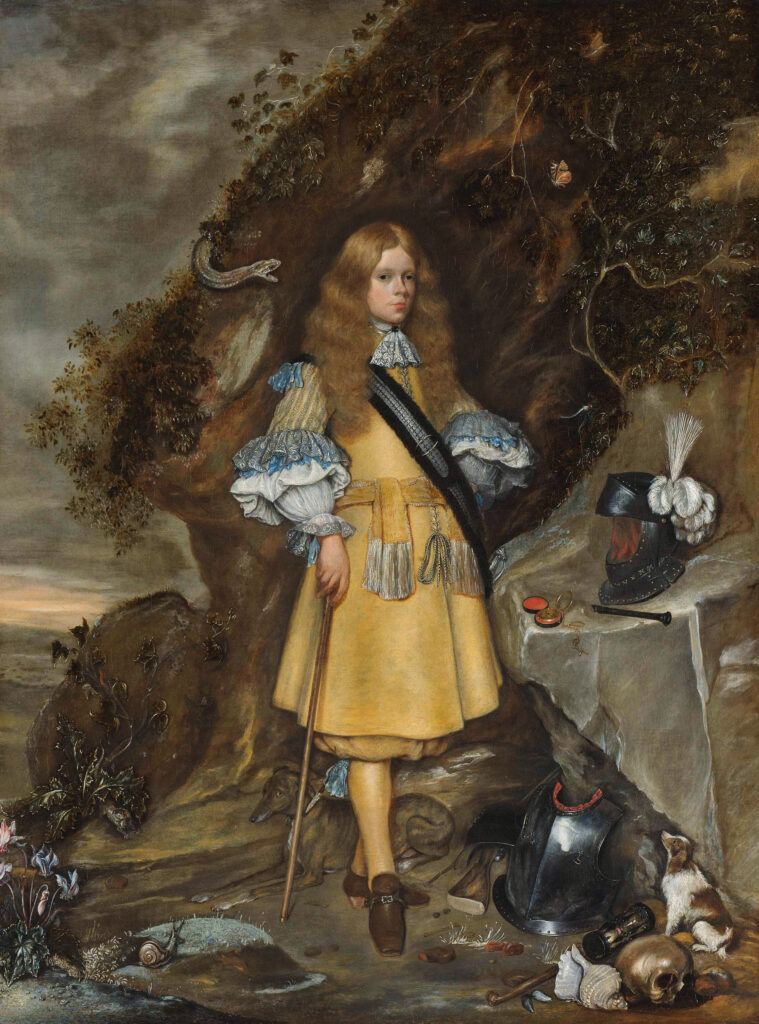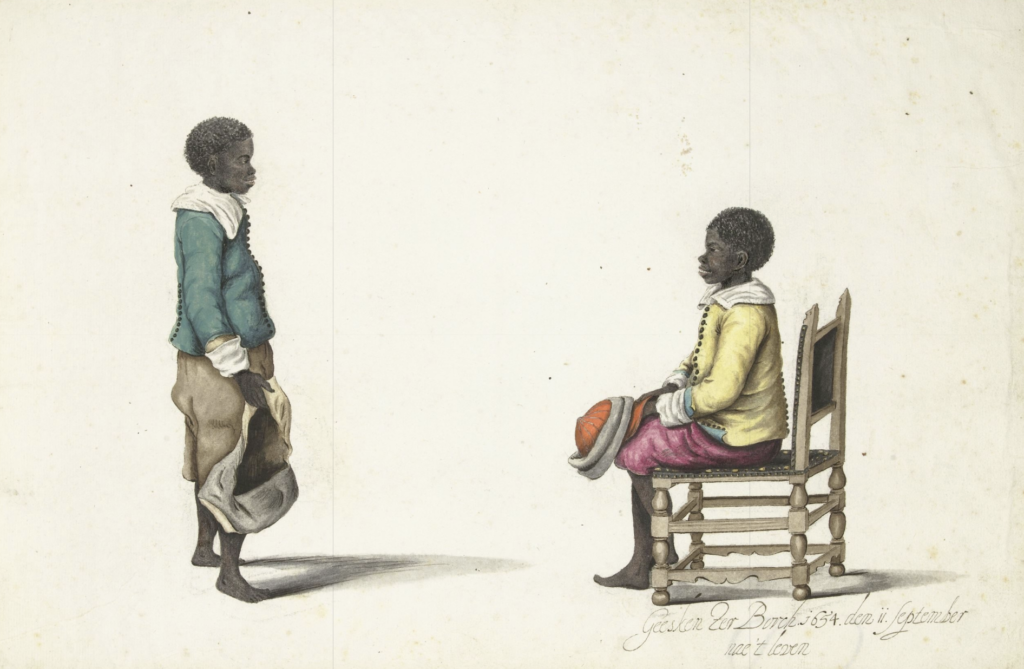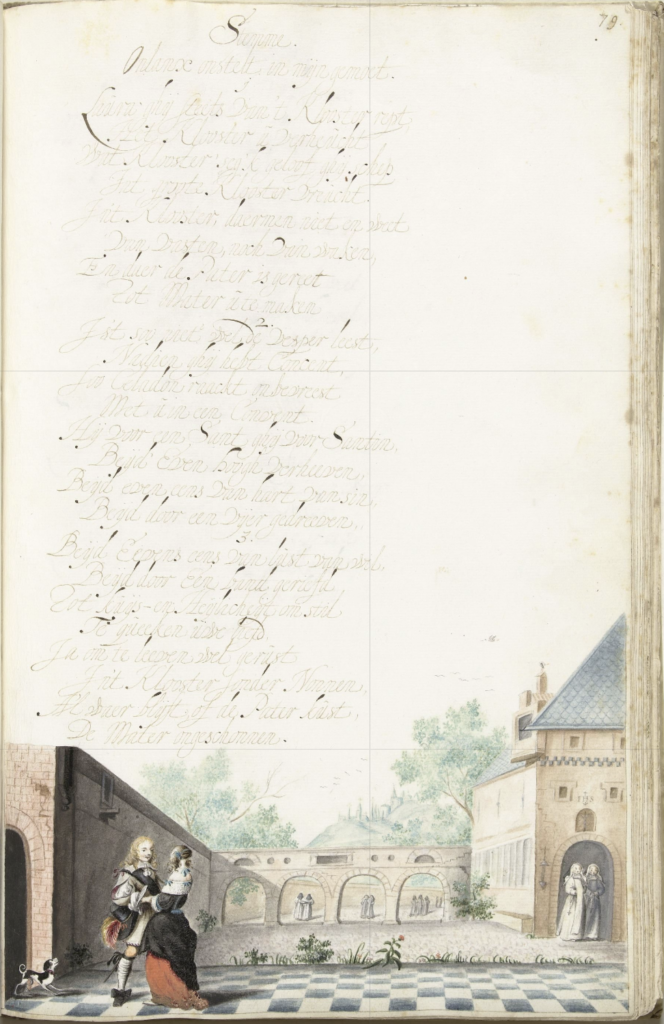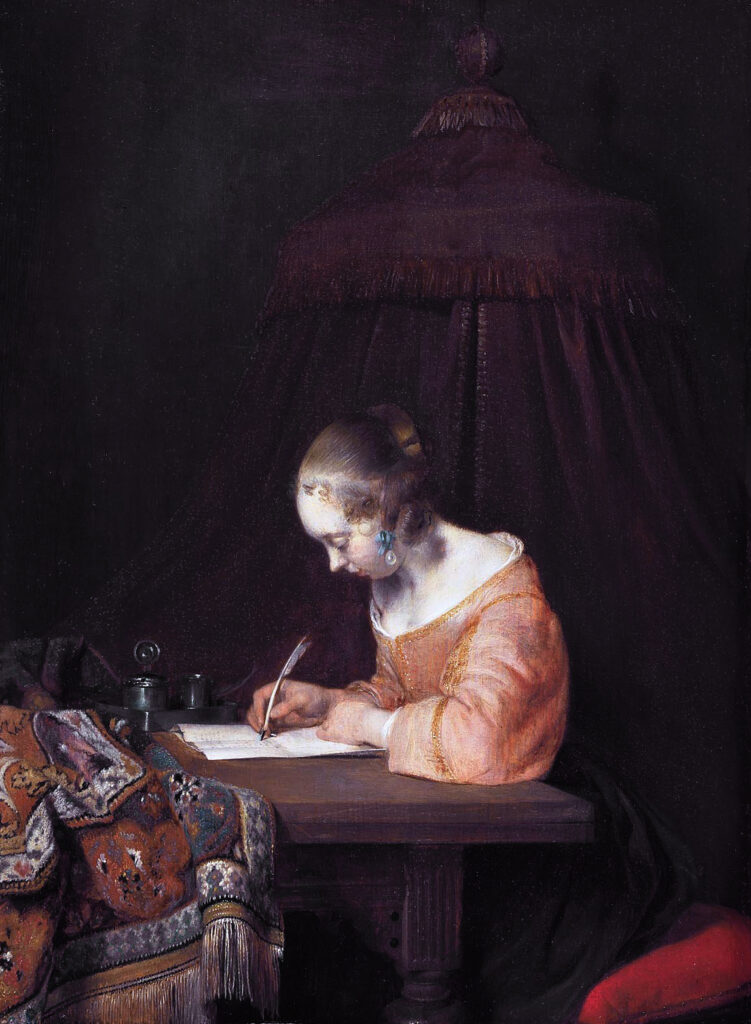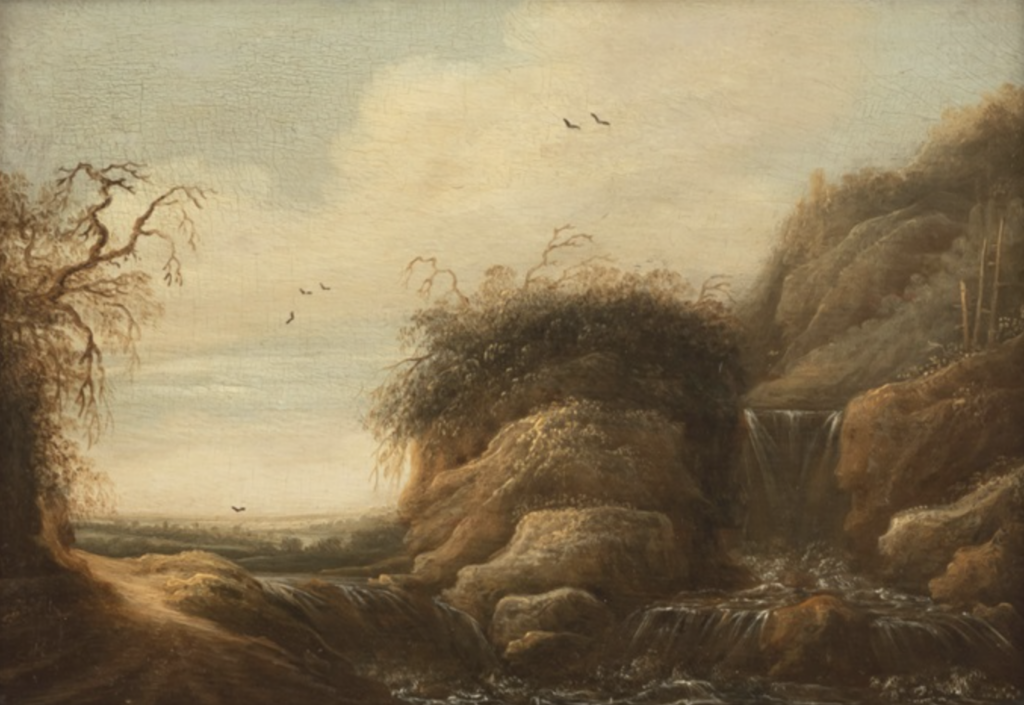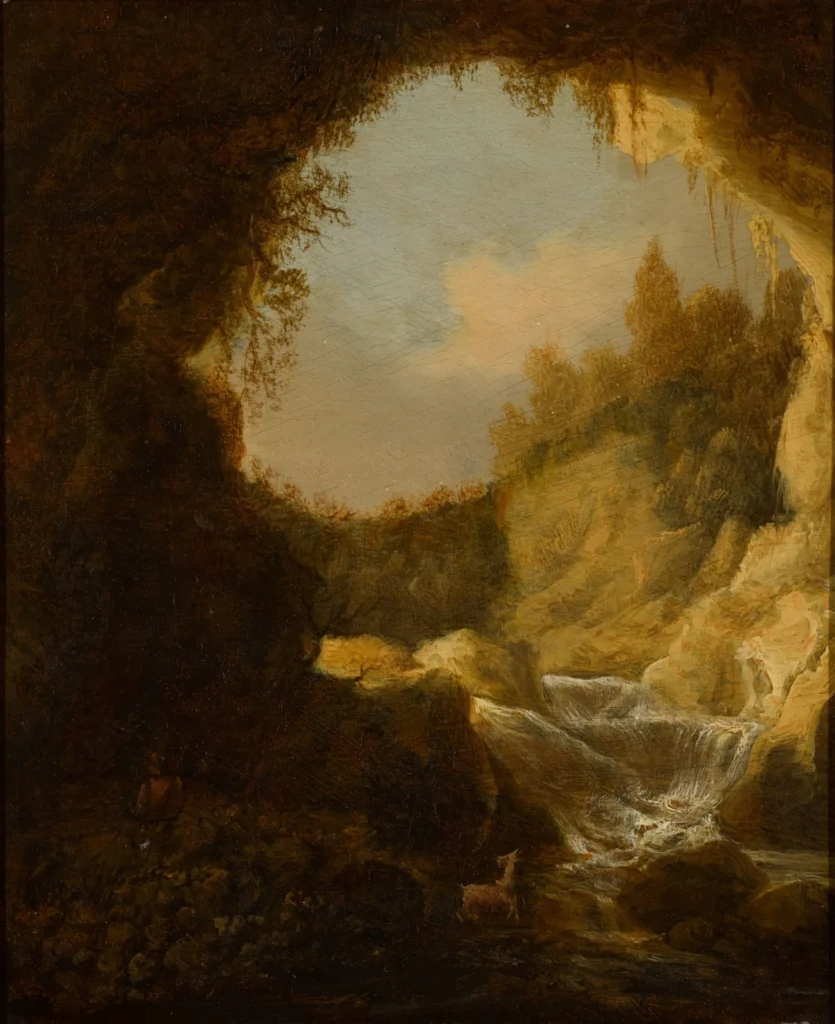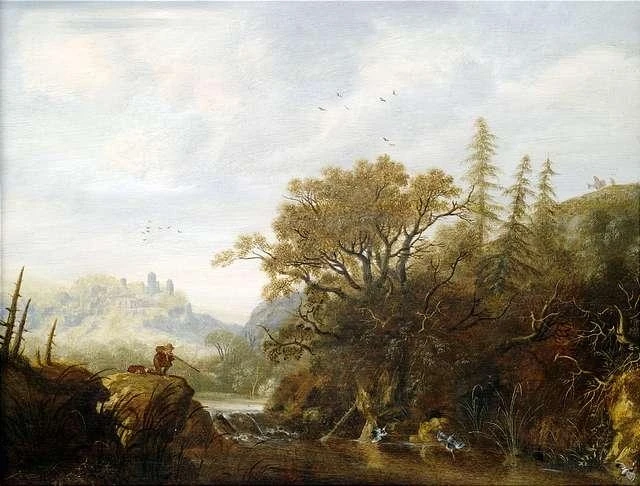Summary
- In Northern Europe, women worked in artist guilds or as court painters since the 15th century. Unfortunately, they had limited access to artistic training, as well as nude models, which often forced them to take on such subjects as domestic genre scenes, landscapes, and still lifes.
- Clara Peeters, a prominent still-life painter.
- Magdalena van de Passe, a little-known female engraver.
- Anna Maria van Schurman, a true 17th-century genius and polymath.
- Judith Leyster, a leading star of the Haarlem school.
- Maria van Oosterwijck, an enterprising flower painter.
- Maria Sibylla Merian, a peripatetic artist, scientist, and trailblazer.
- Rachel Ruysch, a woman whose works were pricier than those of Rembrandt.
- Johanna Koerten, a well-connected woman who turned paper into artworks.
- Gesina ter Borch, unknown in her lifetime and prized nowadays.
- Catharina van Knibbergen, one of few female landscape painters.
The religious and political history of a country cannot be summed up in a sentence, but for the purposes here, during the 17th century in the Dutch Republic, two branches of Protestantism–Calvinism and Lutheranism–were among the dominant forms of worship. Though Lutherans allowed for some degree of religious art, Calvinists did not as there was a concern for idolatry, in other words people would start worshipping the image itself rather than who or what it represented. This opened paths for other types of representations to gain popularity, such as traditional history paintings, as well as landscapes, genre scenes, and still lifes which Dutch art was particularly known for.
Paving the Way
In Northern Europe, women appeared on guild rolls as early as the 15th century. There are noted instances of women who ran workshops and received commissions and women who continued to join the artist guilds (in the instances it was allowed). Interestingly, many of them were recipients of court patronage. For instance, did you know there was a Van Eyck sister, Margaretha? She was a painter at the Burgundian court along with her more famous brothers, Jan and Hubert. Being a court painter generally meant a more steady paycheck and less constraint than the hierarchal artist guilds.
Training for 17th Century Women Artists
As has been the case throughout history, there were limited avenues open to women pursuing an artistic education. The training was often with a family member or friend, though women did occasionally serve as apprentices. Nude modeling, necessary for the larger historical paintings, was not allowed for them, apprenticed or not. (This issue is discussed in a classic 1970s essay by Linda Nochlin.) This relegated them to the aforementioned other subjects such as domestic genre scenes, landscapes, and still lifes.
1. Clara Peeters
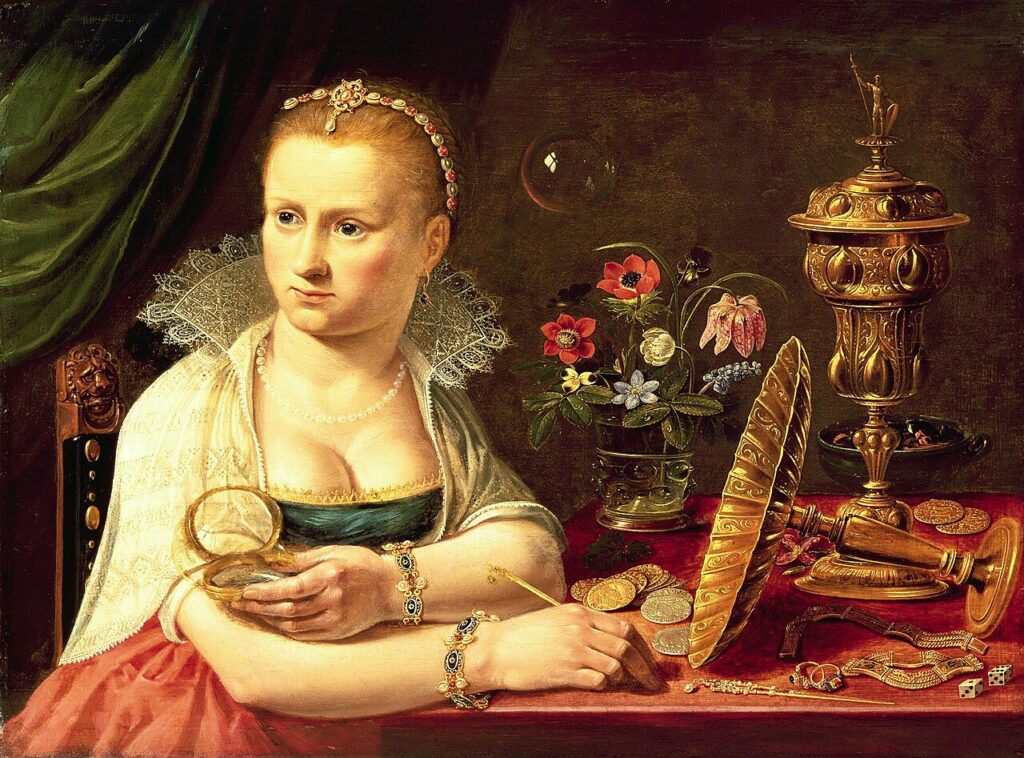
Clara Peeters, Possibly a self-portrait of the artist, c. 1618. Wikimedia Commons (public domain).
Like many artists from the Dutch Golden Age, information about Clara Peeters’ life (1594-after 1657), including her artistic training, is scant. What is known is gleaned from a handful of documents that mention an artist believed to be her, from the information her paintings offer, and from the materials she used. It is believed that she spent much of her time in Antwerp and that she may have been apprenticed to well-known still-life painter Osaias Beert.
She had a natural talent, though; Peeters’ earliest signed painting is from 1608 when she was only 14 years old. Before she turned 20, she produced at least four still lifes that currently reside in Museo del Prado in Madrid. The term “still life” was not used until 1650. Before that, the scenes were described in generic terms like “flower piece,” “little breakfast,” or “banquet scene.” Likewise, “genre scenes” were often described as “family scenes” or “interior domestic scenes.”
Peeters was known for “breakfast pieces” that included food and tableware. These would have a variety and range of foods on different types of plates and platters, sometimes with flowers, usually with a dark background and low perspective. As food trends evolved, so did what she included.
Still lifes never get enough love, but look at the detail, texture, and form: the shadows on the curve of the scallop-shaped bowl, the translucence of the wine glass, and the pretzel’s reflection on the dish. She also depicted reflections of what was in the room, including herself – she was one of the first to incorporate a self-portrait into a still-life (see the image in the gallery below!).
There are only 39 paintings that bear Peeters’ name and a handful more that can be firmly attributed to her.
2. Magdalena van de Passe
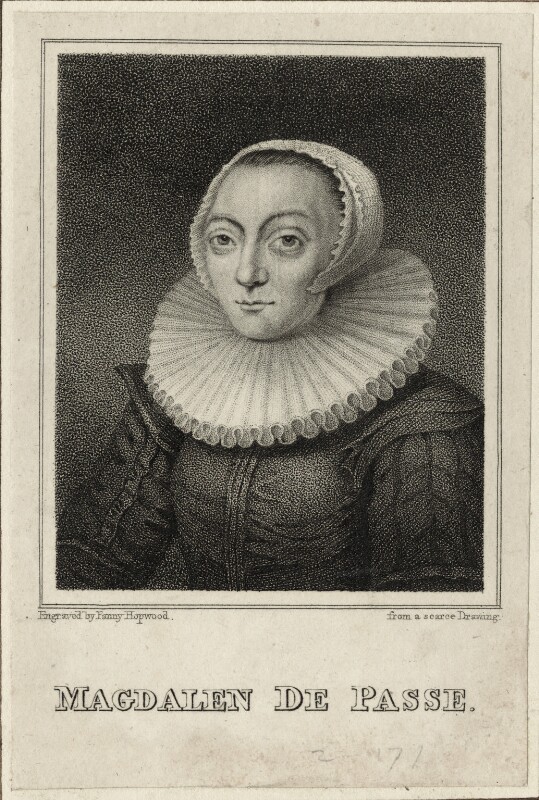
Fanny Hopwood, Magdalena de Passe, early 19th century, National Portrait Gallery, London, UK.
Though we hear very little about Dutch Golden Age women painters, we hear even less of female engravers. Prints, compared to paintings and sculpture, tend to be a less respected medium because of their ability to be mass-produced. Engraving was very complicated, however. The artist had to engrave the image onto a metal plate backwards, as well as convey details, shadows, and sometimes text.
Like Peeters, there is little information available about Magdalena van de Passe (1600-1638). She was part of a family of well-known and popular engravers that included her father Crispijn the Elder and her brothers Simon, Willem, and Crispijn the Younger. Her father established a publishing house, first in Cologne and then in Utrecht, where the whole family worked. Magdalena van de Passe was known for her portraits and landscapes.
In The Lighthouse at Alexandria, Van de Passe’s skill can be seen throughout, but especially in the shadowing of the figures’ faces and in the atmospheric perspective of the landscape to show depth.
In 1630, Van de Passe received a license to print images onto cloth and create decorative nightcaps. She was the only person in the Netherlands permitted to do this and even had a copyright on it, violators could be fined. Documentary sources reveal that images included recent military victories and royalty. Unfortunately, none of these survived.
She was briefly married to a fellow artist who died a few years after they wed; she then returned to live with her father. At some point, Magdalena van de Passe trained a young Anna Maria van Schurman. Van de Passe died in 1638 in Utrecht.
3. Anna Maria van Schurman
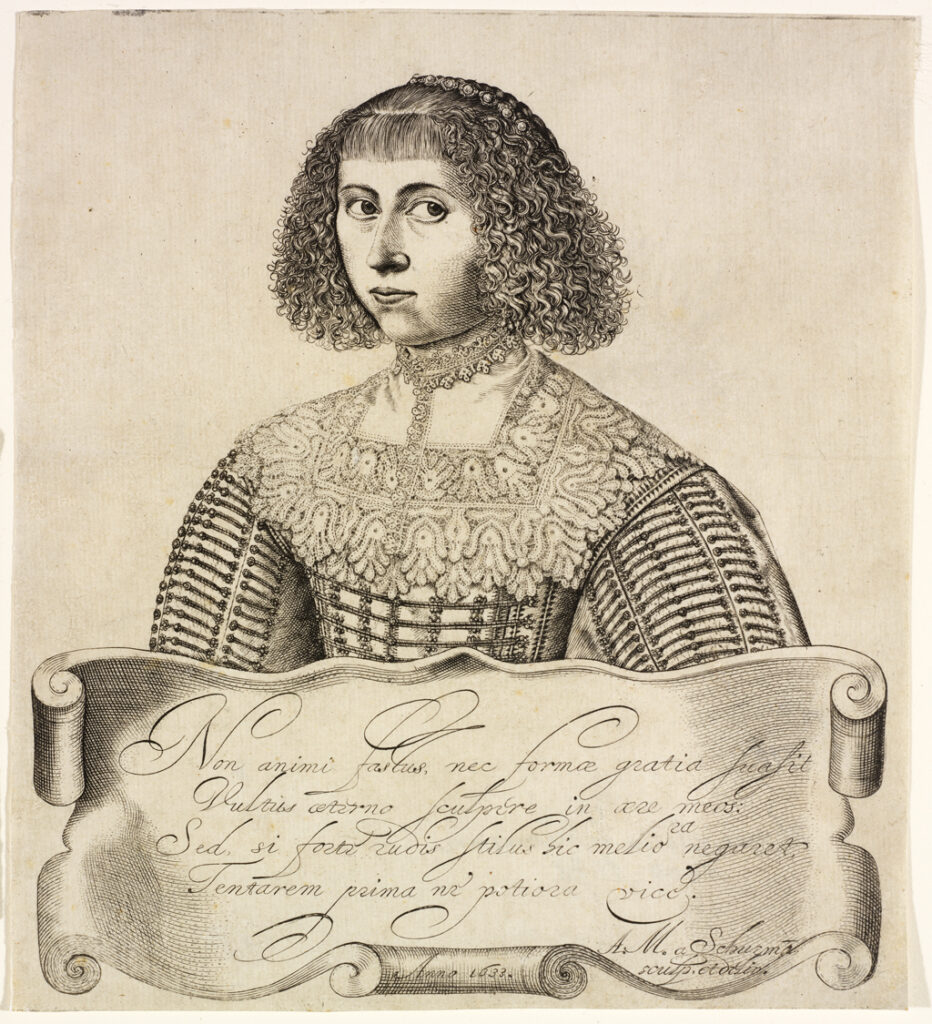
Anna Maria van Schurman, Self Portrait, 1633, RISD Museum, Providence, RI, USA.
The definition of a polymath, Anna Maria van Schurman (1607-1678) was a painter, engraver, writer, poet, and lawyer, and also knew as many as 14 languages.
Her parents were wealthy, enabling her to receive an education. Living in Utrecht, which was a center of education in the 17th century, allowed her to cross paths with a variety of artists, philosophers, and scholars. She, unsurprisingly, was a proponent of women’s education, which she wrote extensively about. Van Schurman corresponded with many leading figures of the day, including philosopher René Descartes as well as Queens Marie de Medici and Henrietta Maria.
At 29 years old, van Schurman was the first female student at the new University of Utrecht. However, she was required to sit behind a curtain, the thought being that she might be too much of a distraction to her male classmates. She graduated with a degree in law and she wrote several books including Nobiliss. Virginis Annae Mariae a Schurman Opuscula Hebraea Graeca Latina et Gallica, Prosaica et Metrica (Minor works in Hebrew, Greek, Latin and French in prose and poetry by the most noble Anne Maria van Schurman), published in 1648, and The Learned Maid or, Whether a Maid may be a Scholar A logick exercise / written in latine by that incomparable virgin Anna Maria à Schurman of Vtrecht. With some epistles to the famous Gassendus and others, published in 1659.
Van Schurman’s artistic inclinations began at a very young age. She created intricate paper-cut designs at the age of six (and sold them!) and a year later, began to embroider. Her art came second to her writing and studies, though she still found time to experiment and try new mediums: painting in oils, pastels, watercolors, and engraving on both glass and paper. The latter she learned from Van de Passe, one of the earlier known instances of a woman training another woman. It’s also the only instance when van Schurman received artistic instruction, the rest she taught herself.
A lifelong Protestant, she ended up joining the Labadists, the same group Maria Sybilla Merian later joined, in 1669. Van Schurman stayed with them until she died in 1678.
4. Judith Leyster
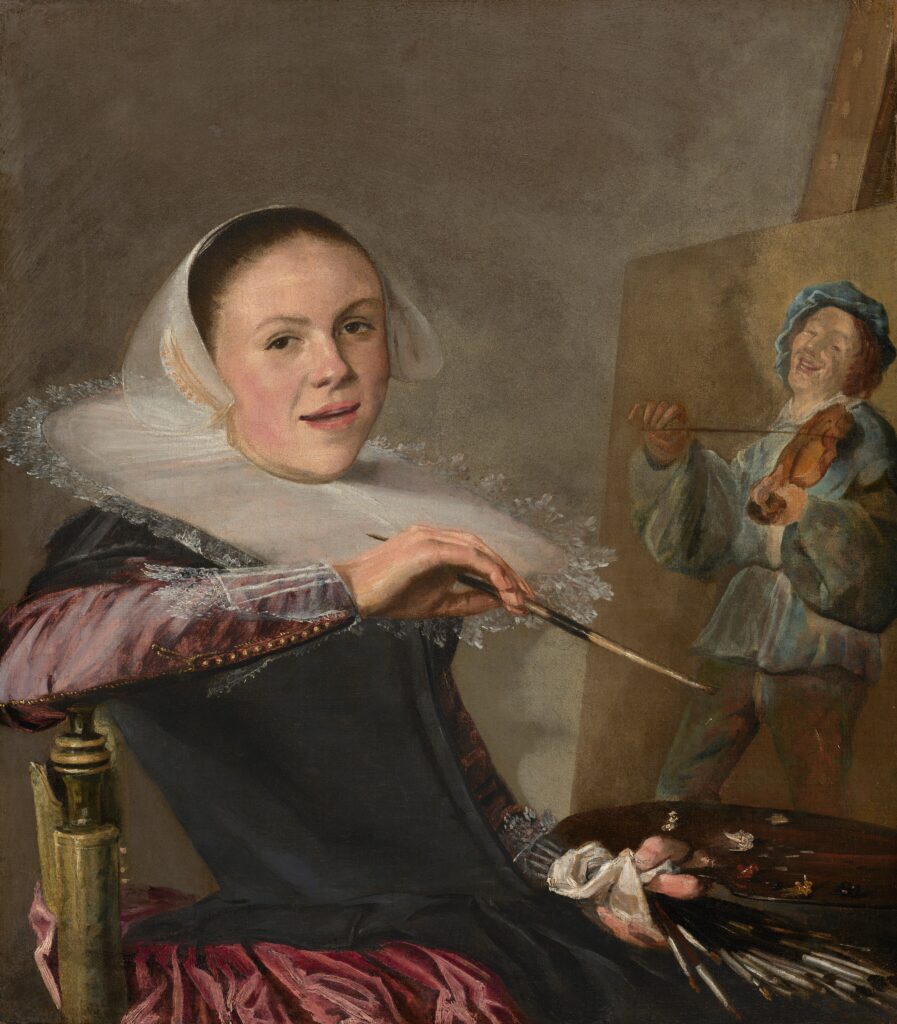
Judith Leyster, Self-Portrait, c. 1630, National Gallery of Art, Washington, DC, USA.
Perhaps the most popular of these Dutch Golden Age women is Judith Leyster (1609-1660). Not much is known about her artistic training, besides that she was an established enough painter to be mentioned in Beschrijvinge ende Lof der stad Haerlem in Holland by Samuel Ampzing. In the Description and Praise of the City of Haarlem in Holland, Ampzing included Leyster’s name along with that of the artist Frans Pietersz de Grebber, to whom she was possibly apprenticed.

Beschrijvinge ende lof der stad Haerlem in Holland, by Samuel Ampzing, 1628. Google Books.
Leyster is often closely associated with the noted Haarlem and Dutch Golden Age artist Frans Hals. It is suggested they worked together, that possibly Leyster was employed in Hals’ studio, because of their similarities in style. However, there is no documentary evidence that supports this.
She was a member of the artist’s Guild of St. Luke and also had her own studio and apprentices. Almost all of her work was completed during a relatively short period of about six years time, between 1629 and 1635. This is possibly due to her 1636 marriage to fellow artist Jan Miense Molenaer. It is possible she then began assisting as a kind of business manager for her husband.
Leyster is known for still lifes and genre scenes and what is sometimes referred to as “merry company” scenes that highlight one or several musicians.
Leyster’s works are spontaneous, enhanced by loose brushstrokes as seen in her c. 1630 self-portrait. Dressed, not in a painter’s smock but in her finest dress, she leans back and looks at the viewer as if in mid-conversation. She does not seem disturbed by the interruption. On her easel is one of those merry company figures. It is interesting to note that we do not see any under drawing, she jumped straight to the painting’s execution. In this one painting, she displays her talent depicting both a portrait and genre scene.
She also shows her eye for detail: the tiny buttons on her sleeves, the natural way her skirt bustles up in the back from how she sits, and the globs of paint on her palette. She skillfully depicts the delicateness and transparency of the lace on her collar and at her wrists with light brushstrokes.
As her technique and subject matter was similar to both Hals and her husband, her paintings were often misattributed to them. It was not until the mid-20th century that such works were correctly identified as being by Leyster. The only work that can be dated after her marriage is of a tulip. It is encouraging, though. If this painting exists, there may possibly be more that we just do not know about.
5. Maria van Oosterwijck
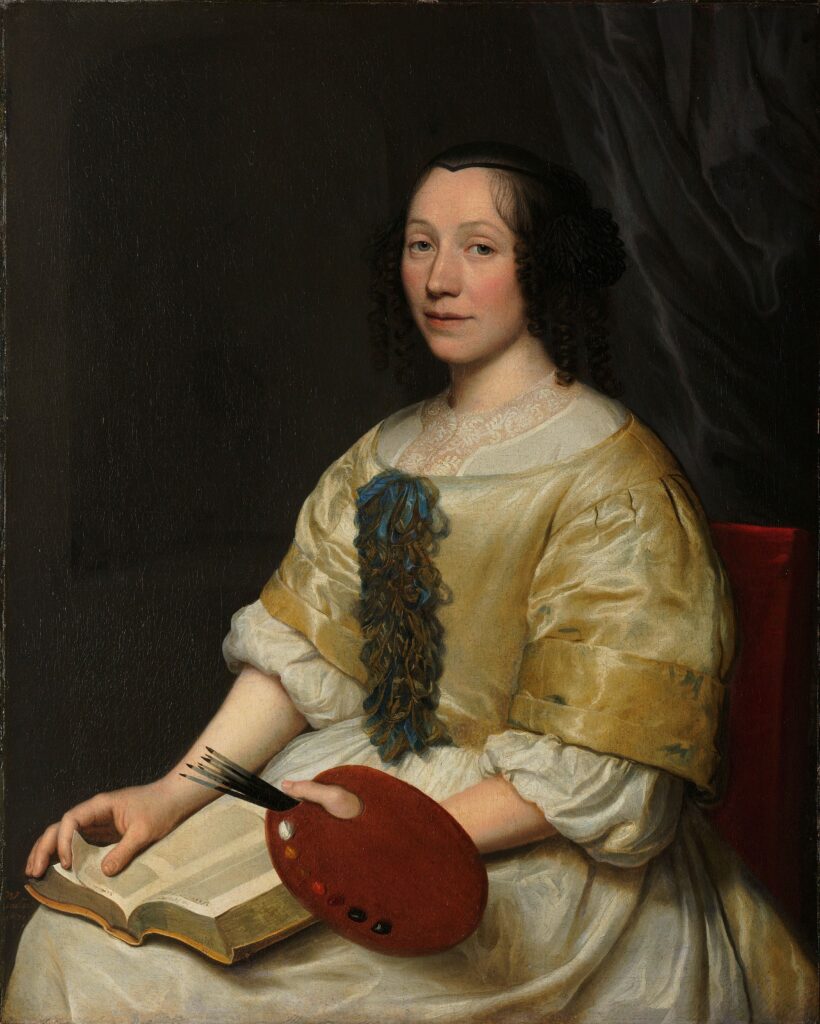
Wallerant Vaillant, Maria van Oosterwijck, 1671, Rijksmuseum, Amsterdam, Netherlands.
Maria van Oosterwijck (1630-1693) was another Dutch Golden Age women artist, born in Nootdorp, near Delft. One source wrote that she had an extended family of artists, which may have been how she came to study in Antwerp with still life and flower artist Jan Davidsz de Heem.
She became well-known for flower paintings with their intricate details and sharp chiaroscuro. Throughout her career, Van Oosterwijck lived and worked in many major Dutch cities including Antwerp, Delft, Amsterdam, and The Hague. While in Delft, she had a studio near famed flower painter Williem van Aelst. Allegedly, he attempted to woo her but she was not interested. In fact, she never married. She enjoyed her work and was clearly successful as a painter to have the means to live independently, despite having joined (or being allowed to join) the local guild. Van Oosterwijck hired a young woman, Geertgen Wyngates (also known as Geertje Pieters), to work in her household and later trained her as an assistant. Wyngates eventually became a painter in her own right.
Though she is known primarily for her flower paintings, her earliest known and dated work is Vanitas-Still Life from 1668. “Vanitas” refers to things that are symbolic of worldliness and the pleasures of life. They also often include objects of “memento mori,” reminders of death that show how fleeting life can be. Like Peeters, in Van Oosterwyck’s Vanitas-Still Life (1668), the artist included a self-portrait in the glass bottle on the left, as well as a reflection of her studio.
Louis XIV purchased one of Van Oosterwijck’s paintings. This inspired an artistic trend among royalty and aristocracy for floral paintings and still lifes. Her last painting was purchased by Queen Anne of England and is currently held in the collection of Kensington Palace.
6. Maria Sibylla Merian
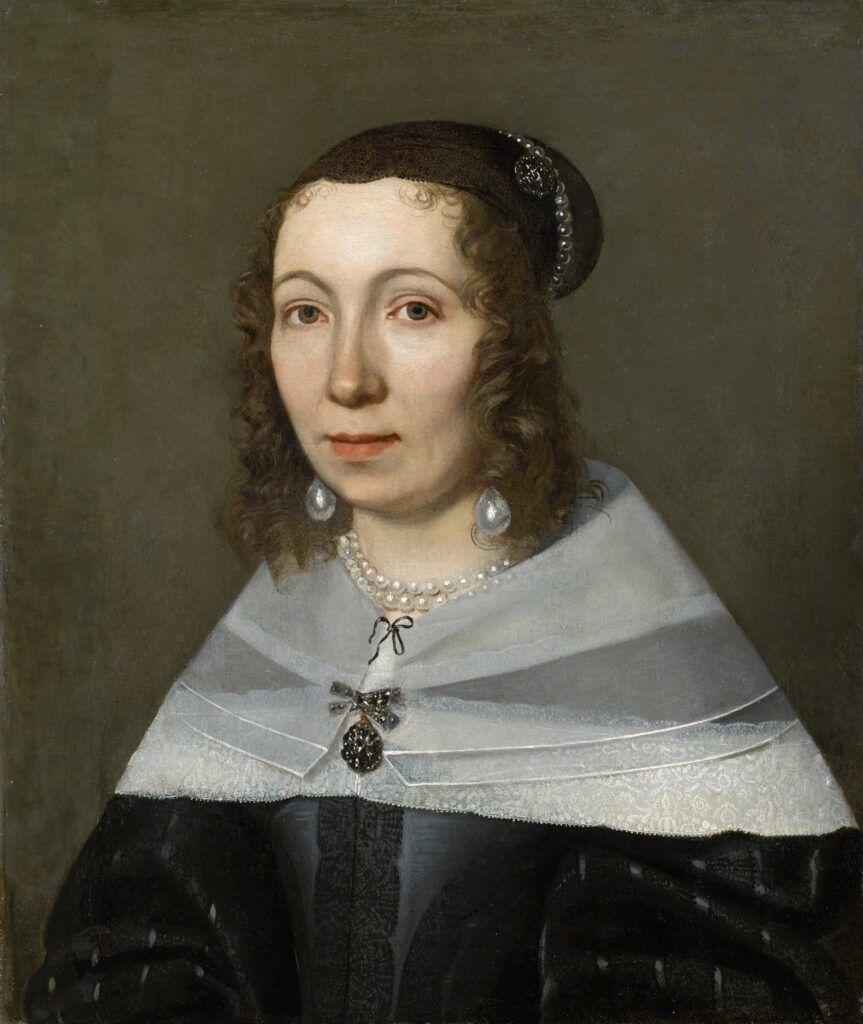
Jacob Marrel, Portrait of Maria Sibylla Merian, 1679, Kuntsmuseum, Basel, Switzerland.
Maria Sybilla Merian (1647-1717) juggled several careers in addition to being a wife and mother: she was an author, entomologist, naturalist, and botanical artist who set the gold standard for botanical illustration.
Her father, Matthäus Merian, was an engraver, who died when she was very young. Her stepfather was the floral painter Jacob Marrell. He encouraged his stepdaughter’s talent, and his apprentice Abraham Mignon even provided her training. At age 13, her interests in science and art merged and set her on the unique path her life would take. She began to observe and record the life cycle of silkworms. Her research later expanded to include the various caterpillars she found around her hometown of Frankfurt.
Merian authored a three-volume catalogue on flower engravings originally titled Blumenbuch (Book of Flowers) and later renamed as Neues Blumenbuch or New Flower Book. The first was published in 1675 when she was 28, the next volume was released a few years later in 1677, and the third (with the first two reissued) in 1680. The books were also used as embroidery patterns.
As she worked on the final volume of Neues Blumenbuch (and gave birth to her second daughter), Merian also worked simultaneously on another three-volume set based on her caterpillar research called Der Raupen Wunderbarer Verwandlung (The Wondrous Transformation of Caterpillars). Published in 1679, it included 50 engravings of caterpillars, their life cycles, and their food sources. Most interestingly, Merian based her drawings on living insects whereas other artists used dead specimens. Her books were incredibly popular and well-received by the scientific community.
Contrary to her work, Merian lived a rather unconventional lifestyle. She married another of her stepfather’s apprentices, Johann Andreas Graff in 1665, and had two daughters, Johana Helena and Dorothea. However, she converted to Labadism in 1685. The group did not believe in formal marriage, and she therefore left her husband and they eventually divorced.
She, along with her daughters and mother, traveled to the Province of Friesland in the north (now part of the Netherlands) where there was a Labadist commune at Waltha Castle. For the next three years, Merian continued her studies of the natural world there. A year after her mother died in 1690, she returned to Amsterdam, opened a studio, and may have possibly crossed paths with fellow artist Rachel Ruysch. (Some sources say that Merian provided artistic tutelage to Ruysch.)
In 1699, when she was in her early fifties, Merian traveled to the Dutch colony of Suriname in South America with her daughter Dorothea to collect, catalogue, and illustrate the area’s indigenous flowers and insects. She was the first woman allowed by the West India Company to take the transatlantic journey. Merian went back once more to Amsterdam in 1701, possibly after she contracted an illness, though she continued to work on what became Metamorphosis Insectorum Surinamensium (1705). Translated into several languages, this latest work had 60 copper engravings of their work and research undertaken in Suriname. Merian suffered a debilitating stroke in 1715 and died in 1717. Her last work, Erucarum Ortus Alimentum et Paradoxa Metamorphosis, was published posthumously.
She was “rediscovered” in the late 20th and early 21st centuries and recognized for her scientific and artistic achievements. Sir David Attenbourgh is a fan of hers and noted her innumerous contributions to science. Germany featured her image on a stamp and, before switching to the euro, she was the face on the 500 mark bill. More recently, Metamorphosis Insectorum Surinamensium was republished in 2016 and a 2017 conference centered around Merian’s life and work.
7. Rachel Ruysch
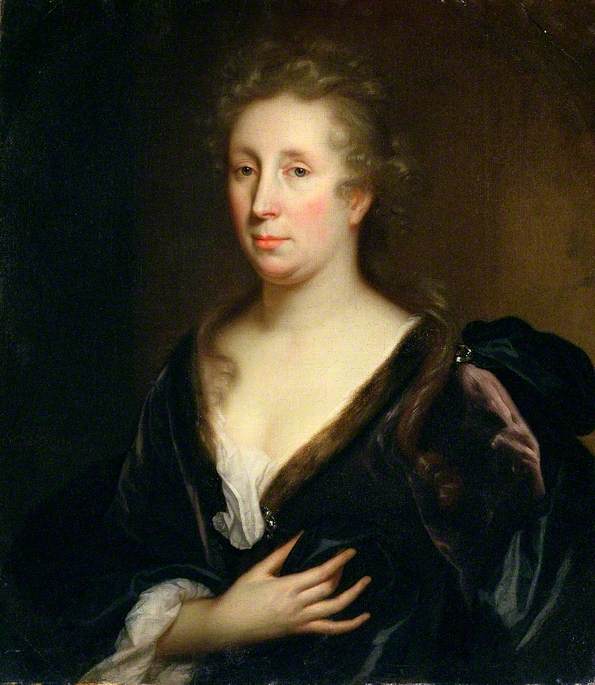
Godfried Schalcken, Portrait of Rachel Ruysch, c. 1690-1700, The Wilson, Cheltenham, Gloucestershire, UK.
Rachel Ruysch’s father was an anatomy and botany professor, and as a child she assisted him in cataloguing his many specimens. Her maternal grandfather was an architect, so Ruysch (1664-1750) came from an artistic and scientific background.
In 1679, at the age of 15, Ruysch was apprenticed to Willem van Aelst, Oosterwijck’s studio neighbor and one-time suitor. Thus was the start of her long and prodigious career. She became internationally known for her flower paintings and her work was in high demand.
Her paintings have a dark background with bright and illustrious florals in the foreground. The arrangements have a sporadic feel to them – the occasional flower head droops as if they were just set down. Her compositions tend to be asymmetrical with the flowers and tendrils providing an almost swirling feel to them. This may have been something she picked up from Van Aelst, though she takes it up a notch.
The flowers she depicted are heavily detailed with remarkable precision and accuracy. But these aren’t just pretty faces, her inclusion of certain flora is purposeful. The Netherlands is known for their cultivation of beautiful flowers, particularly tulips, and the 16th century is when it started. Flowers, especially rare and exotic varieties, became part of the country’s growing economy and trade. They also exemplified an owner’s taste and refinement.
In 1693, Ruysch married portrait painter Juriaen Pool, and they had 10 children. Even though she was the matriarch of their large family, she still continued to work. Ruysch and Pool became members of The Hague’s painters’ guild, the Confrerie Pictura. She was the first woman elected to join. In 1708, she became the court painter in Düsseldorf to Elector Palatine Johann Wilhelm and returned to Amsterdam after his death in 1716. She continued to work until at least a few years before her death in 1750.
8. Johanna Koerten
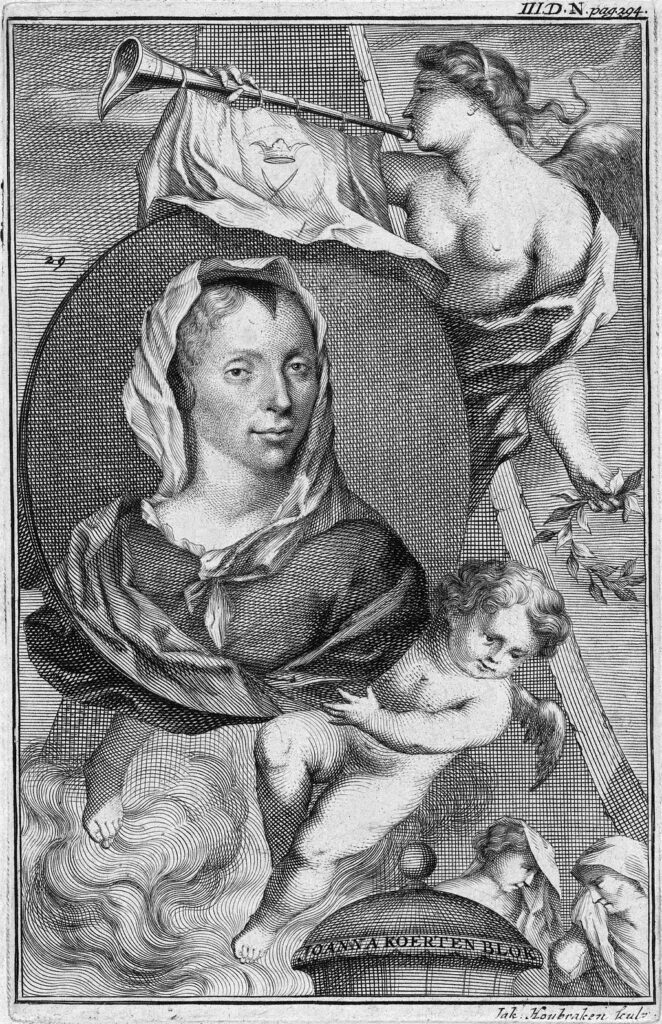
Jacobus Houbraken, Portrait of Joanna Koerten, after a painting by David van der Plaas. Wikimedia Commons (public domain).
Johanna Koerten (1650-1715) was an Amsterdam native who excelled artistically in many techniques such as painting, drawing, embroidery, glass etching, and wax modeling. However, what brought her fame across Europe was silhouette cutting. As many women mentioned above, Koerten was born into an affluent family from Amsterdam who made their fortune from the cloth trade.
It was customary for many women to marry men who practiced the same profession as their fathers, ensuring the continuity of the family business. Her husband, Adrian Block, was also a cloth merchant and, just like in Ruysch’s case, Koerten’s husband was a great supporter of his wife’s artistic career and maintained her legacy alive after she died.
Koerten excelled in precisely cut compositions which imitated painterly qualities, such as the use of perspective or using shades and light to create realistic depth and three dimensionality in her works.
This incredibly innovative and talented woman was visited by the most exquisite clientele of the time, among them Emperor Peter the Great and Cosimo de Medici. Many prominent Dutch artists continuously frequented the studio established by the couple after her death.
9. Gesina ter Borch
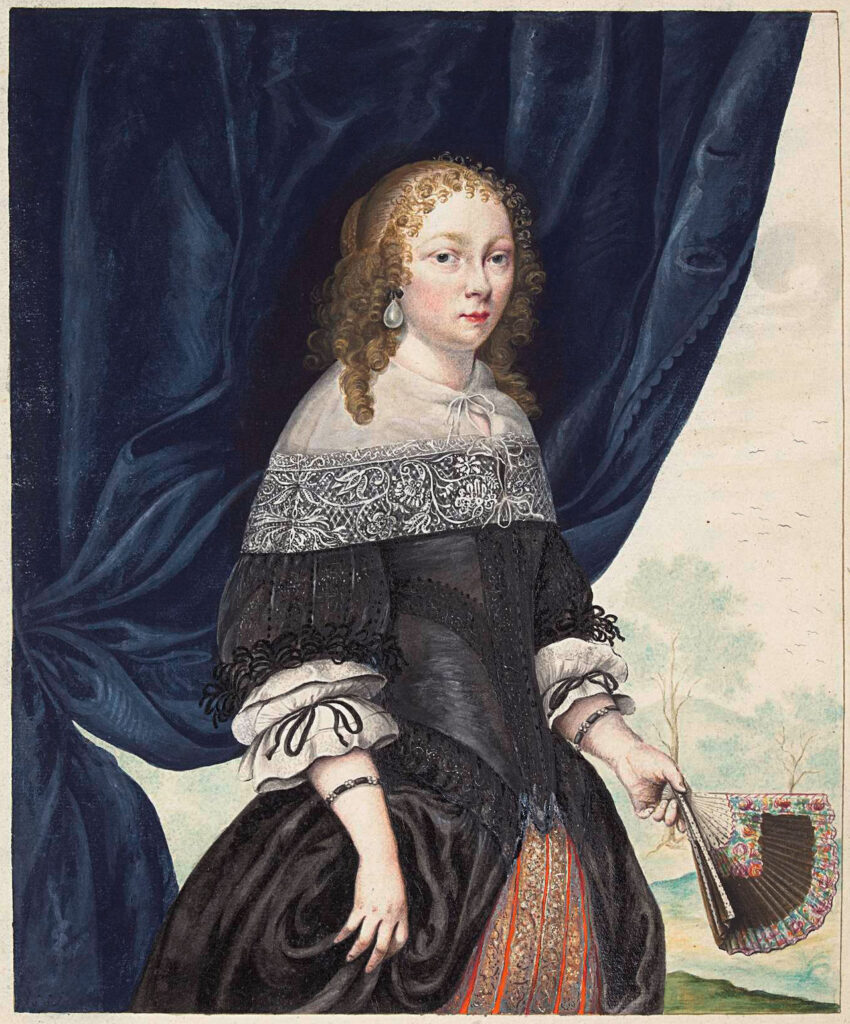
Gesina ter Borch, Self-Portrait, 1661, Rijksmuseum, Amsterdam, Netherlands.
From an artistic family, Gesina ter Borch’s (1631-1690) father Gerard ter Borch the Elder was a painter who trained in Italy. However, it is her half-brother Gerard ter Borch II who became the most recognized artist from the family. The young girl from Zwolle trained under her father and often modeled for her successful brother, known for his elegant and sublime genre scenes featuring women wearing lavish satin dresses.
Ter Borch was also a successful artist in her own right – most known for watercolors (of which there are three beautiful albums), numerous sheets of drawings, and only one oil painting. This painting depicts her younger brother, Moses, who died, an event in her life which was dominated by sadness expressed in her artworks and poetry.
The albums contain portraits of ter Borch family members, as well as illustrated love poetry authored by Gesina herself. Although she is considered an amateur artist, as her works remained unknown during her lifetime, her talent is fully recognized today. She is among a handful of women who joined the Rijksmuseum’s Gallery of Honor (along with Judith Leyster and Rachel Ruysch).
10. Catharina van Knibbergen
Van Knibbergen (active ca. 1630-1675) was a landscape painter of significant fame during her lifetime, however today not much information remains about her life. Her birth and death dates are unknown but it is speculated that she might have been born around 1610. She could have been the daughter of the painter François van Knibbergen, also a landscape painter.
From scant archival documents, we learn that she was active in The Hague and belonged to Confrerie Pictura, an unofficial club of artists dissatisfied with the local Guild of Saint Luke. Hopefully, we will soon be able to tell more about van Knibbergen as more and more researchers take interest in “re-discovering” women in the Dutch Golden Age.
